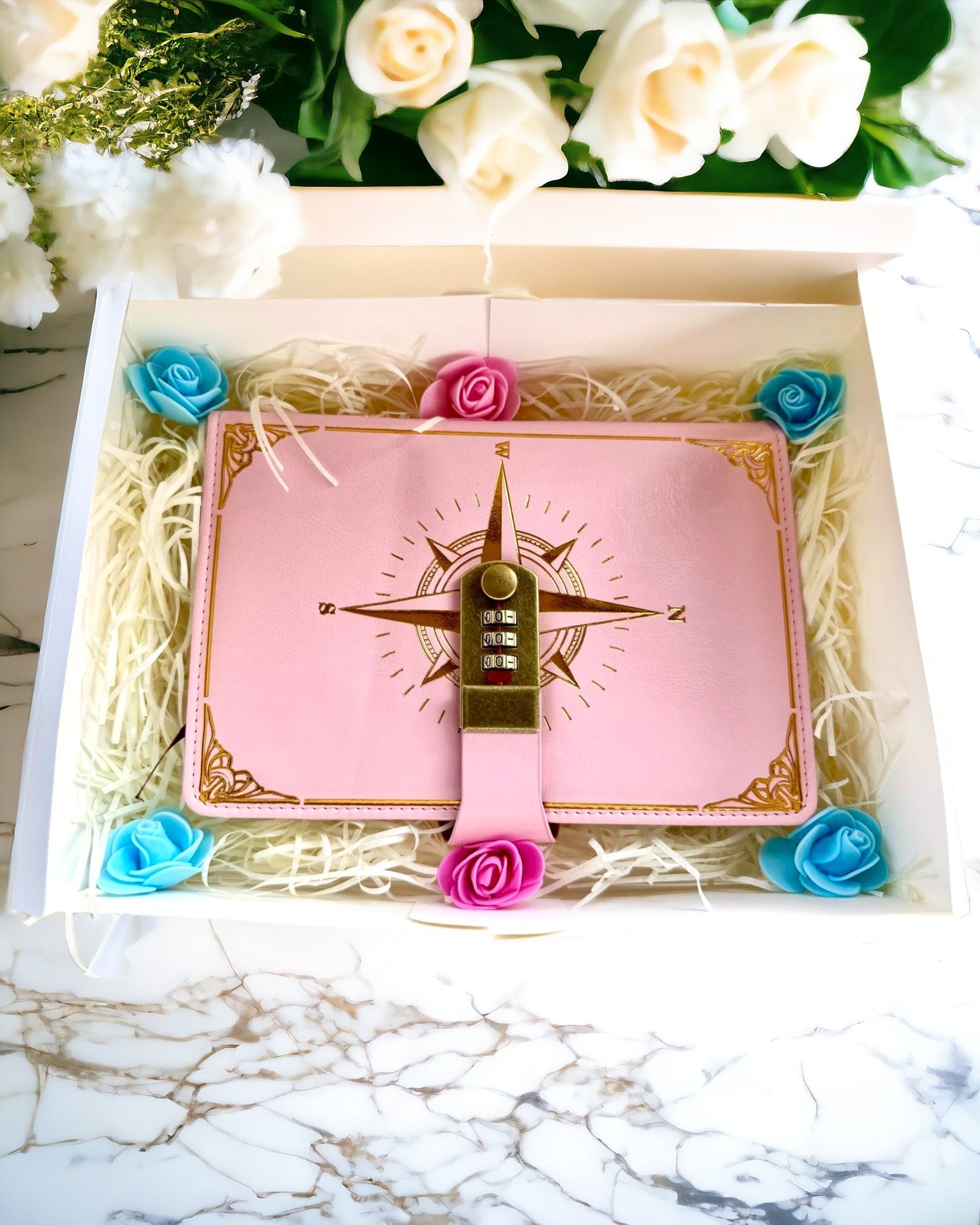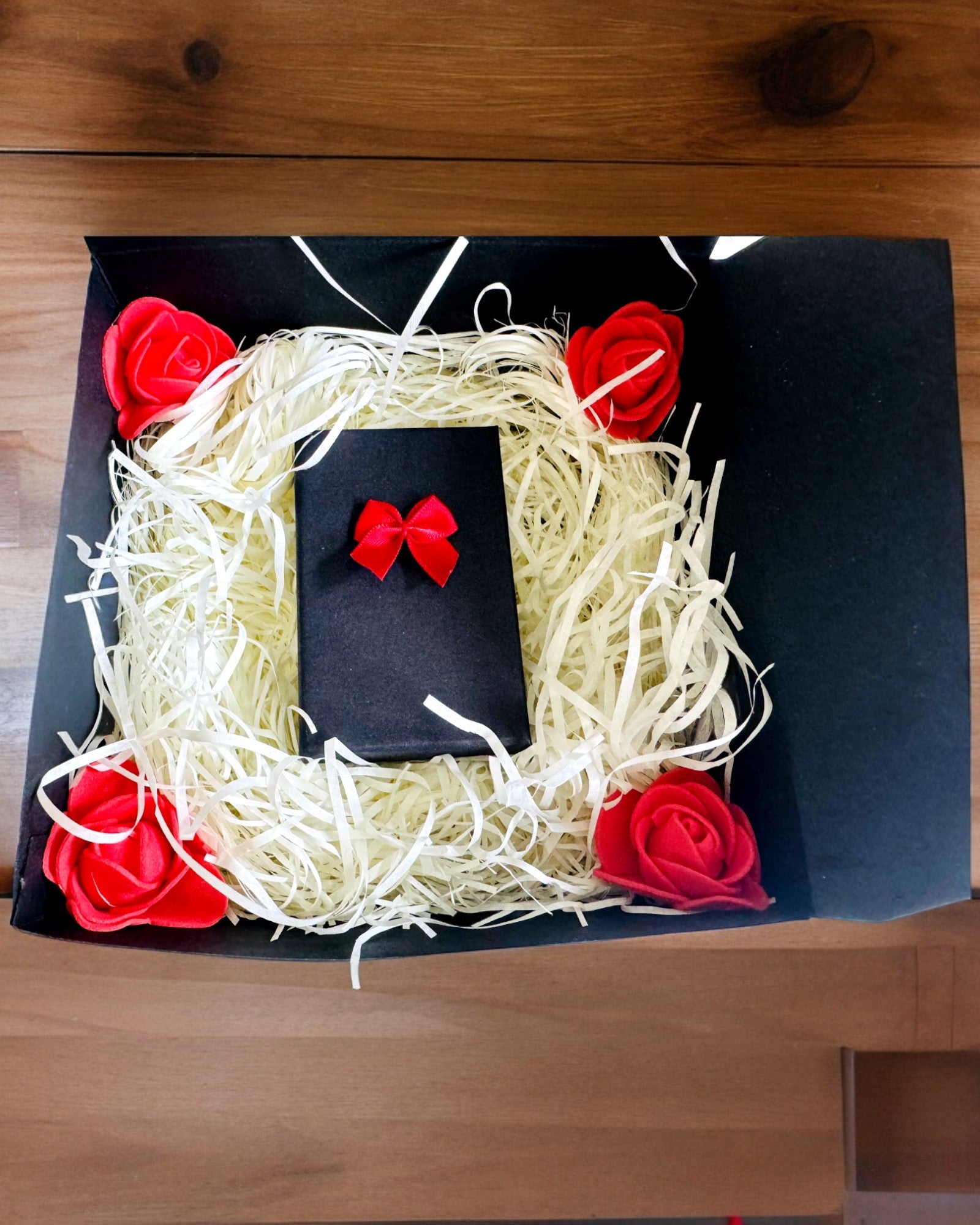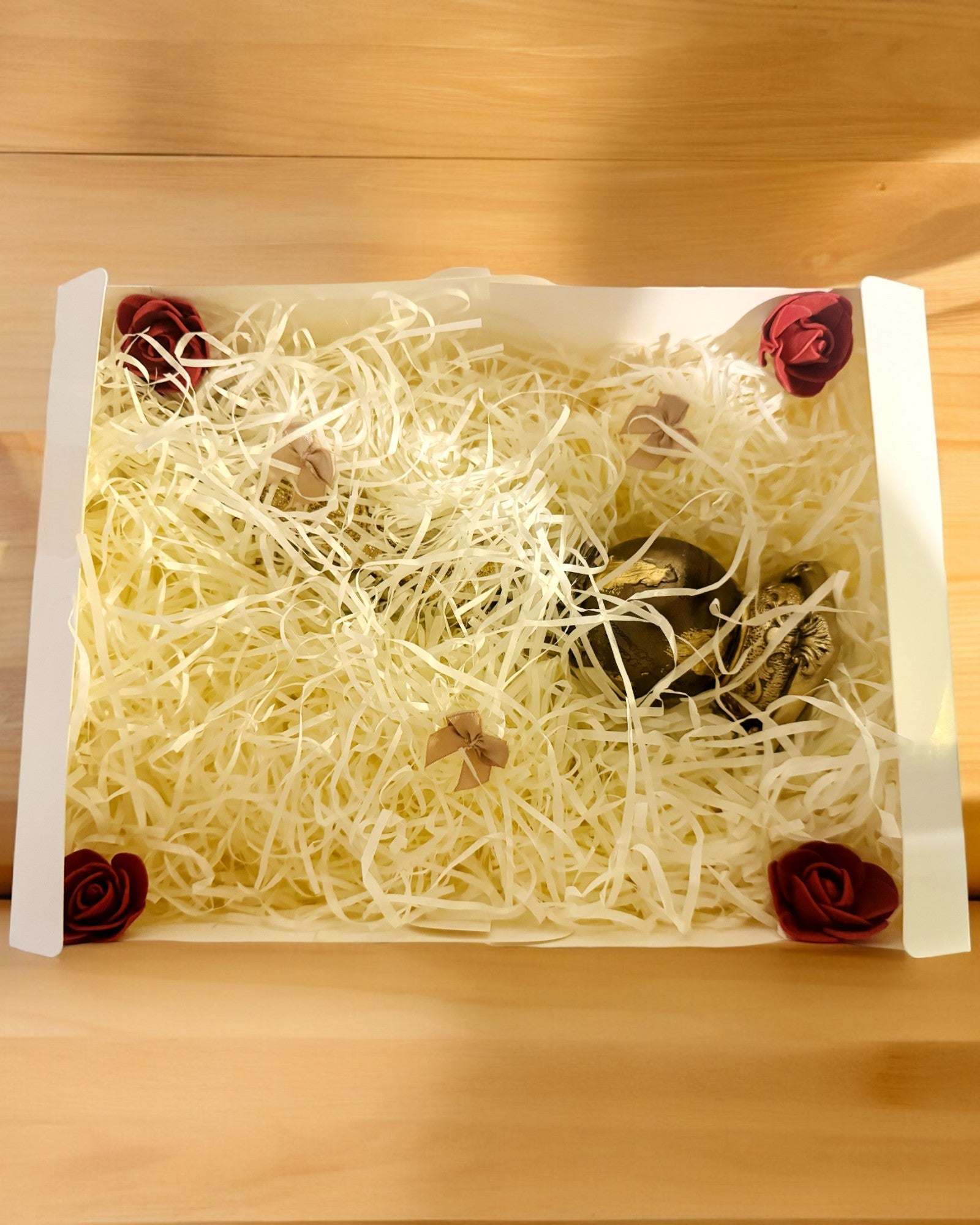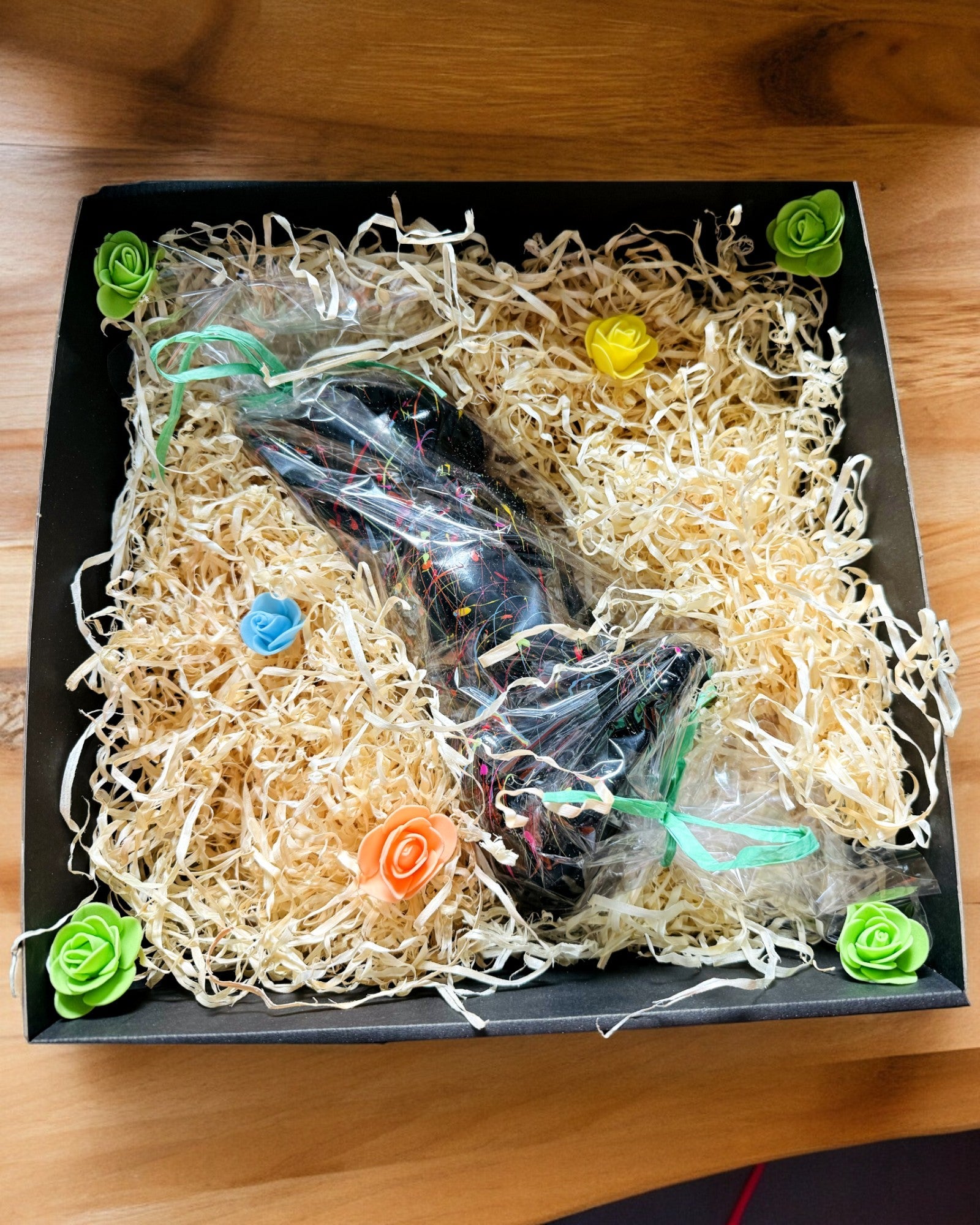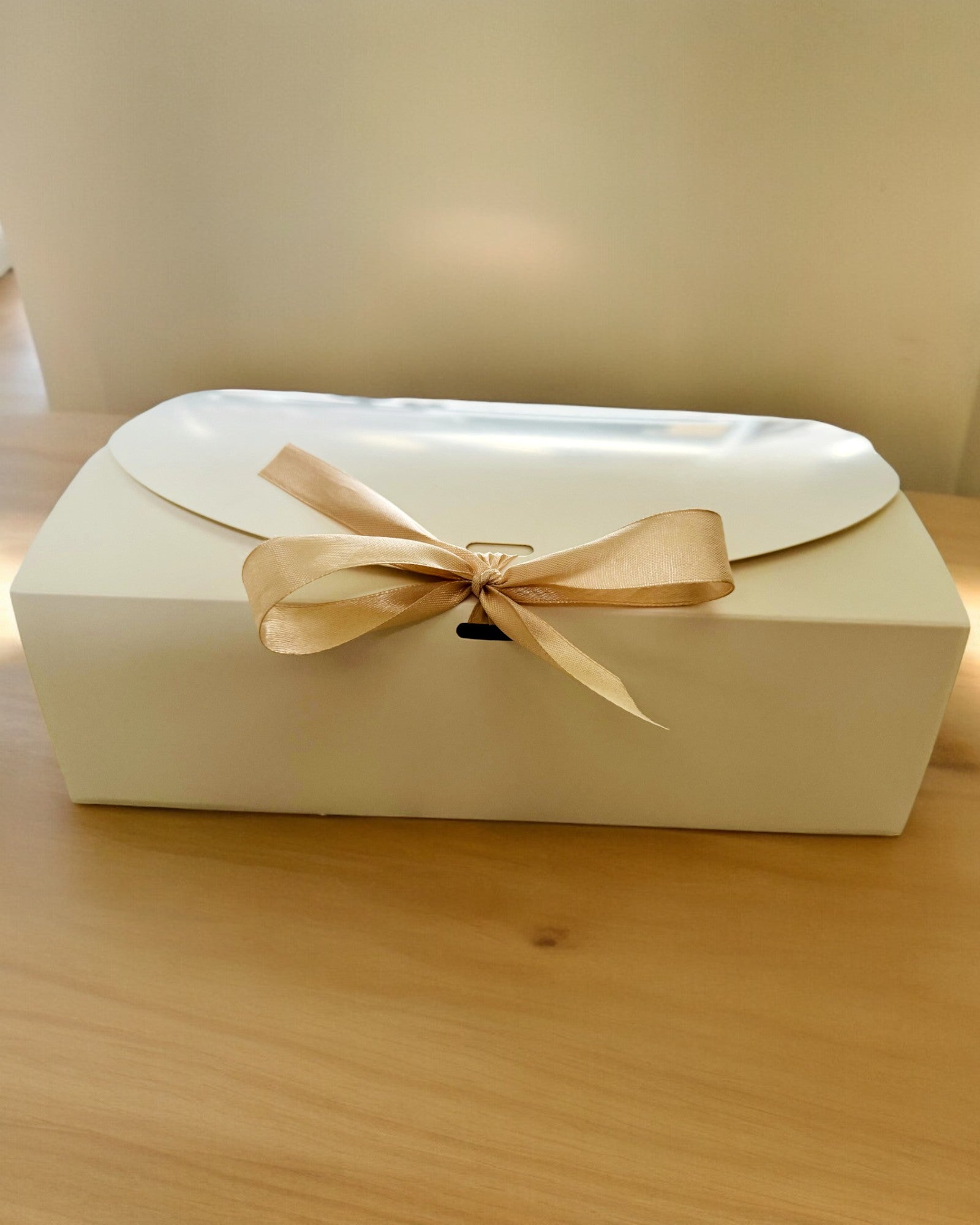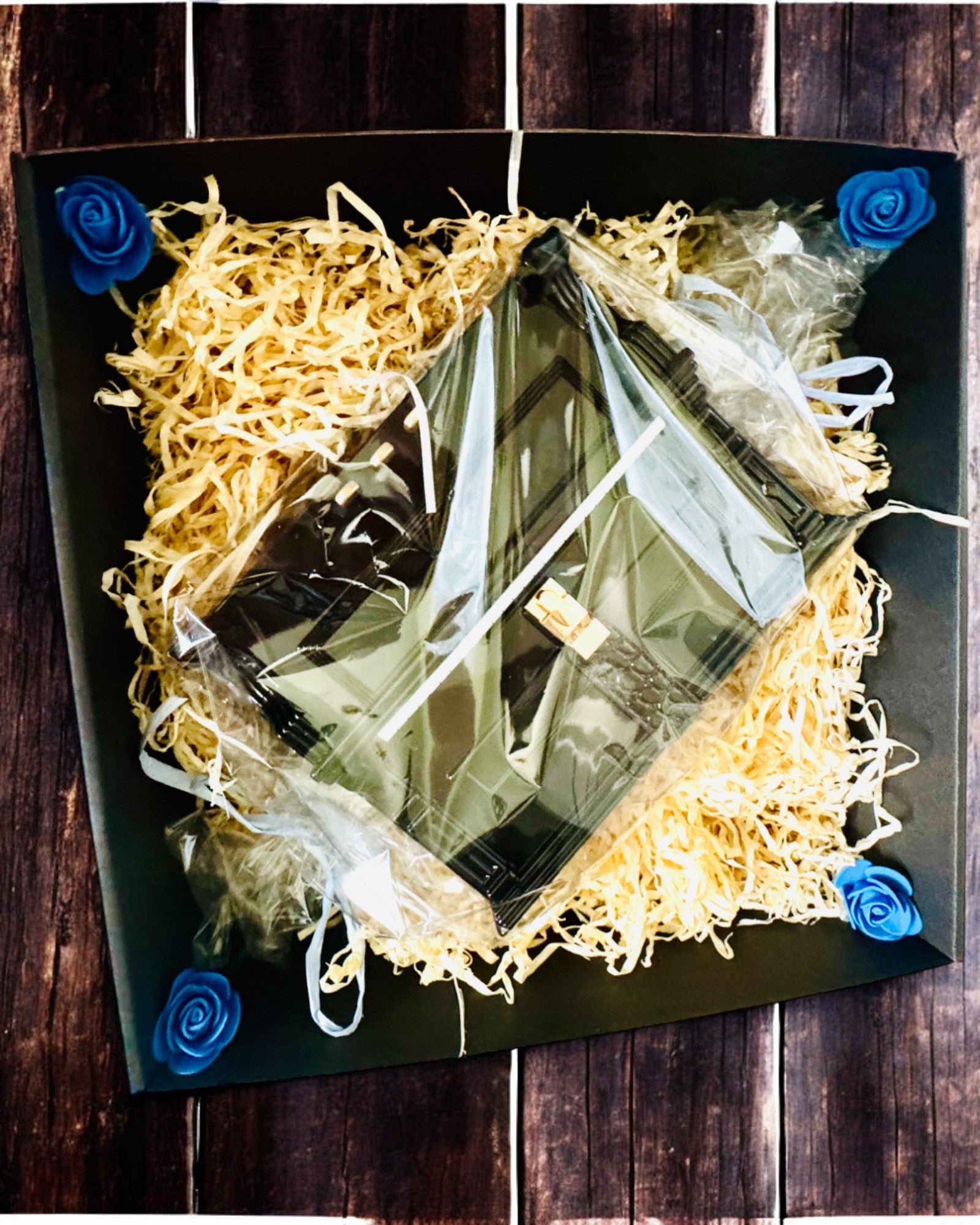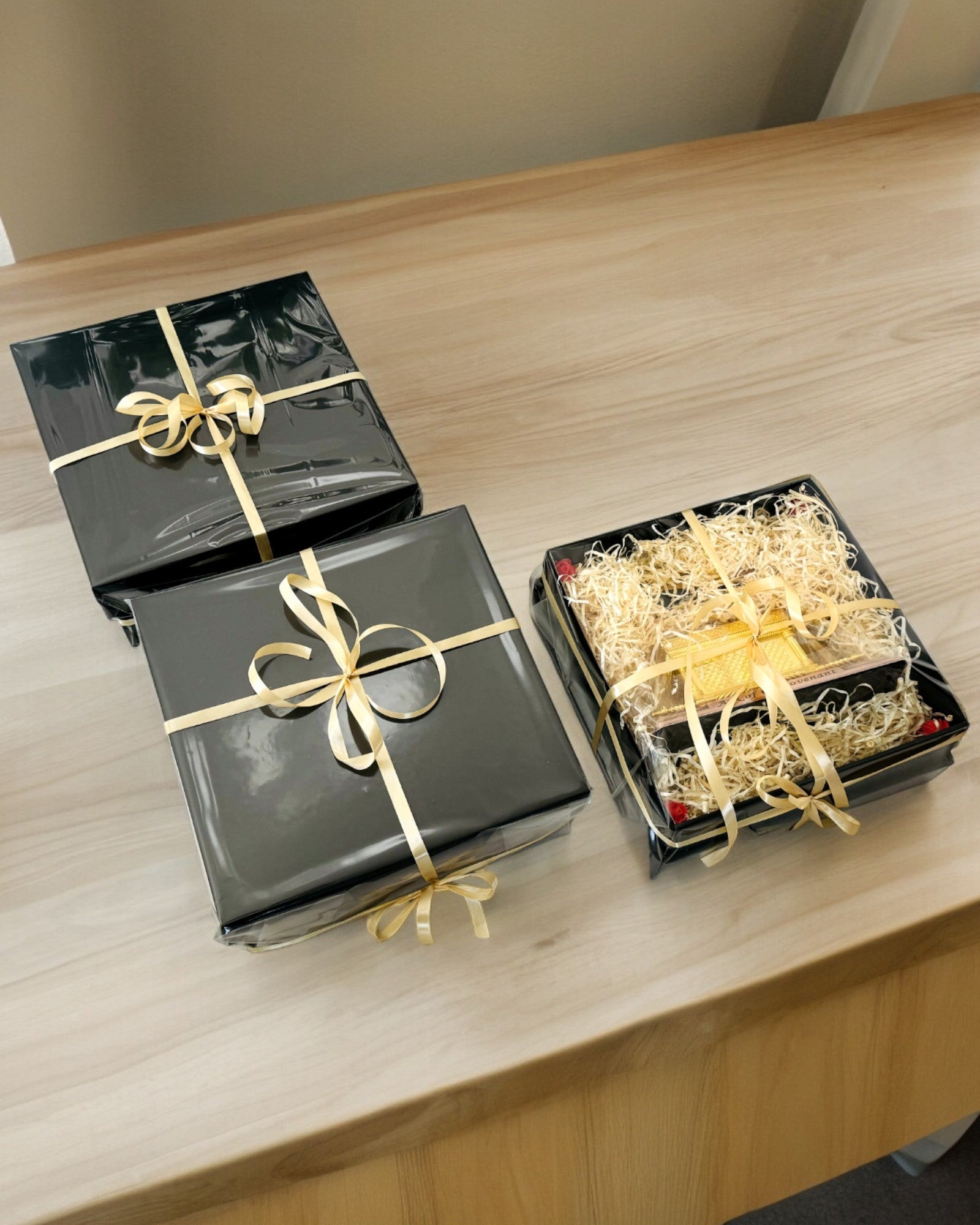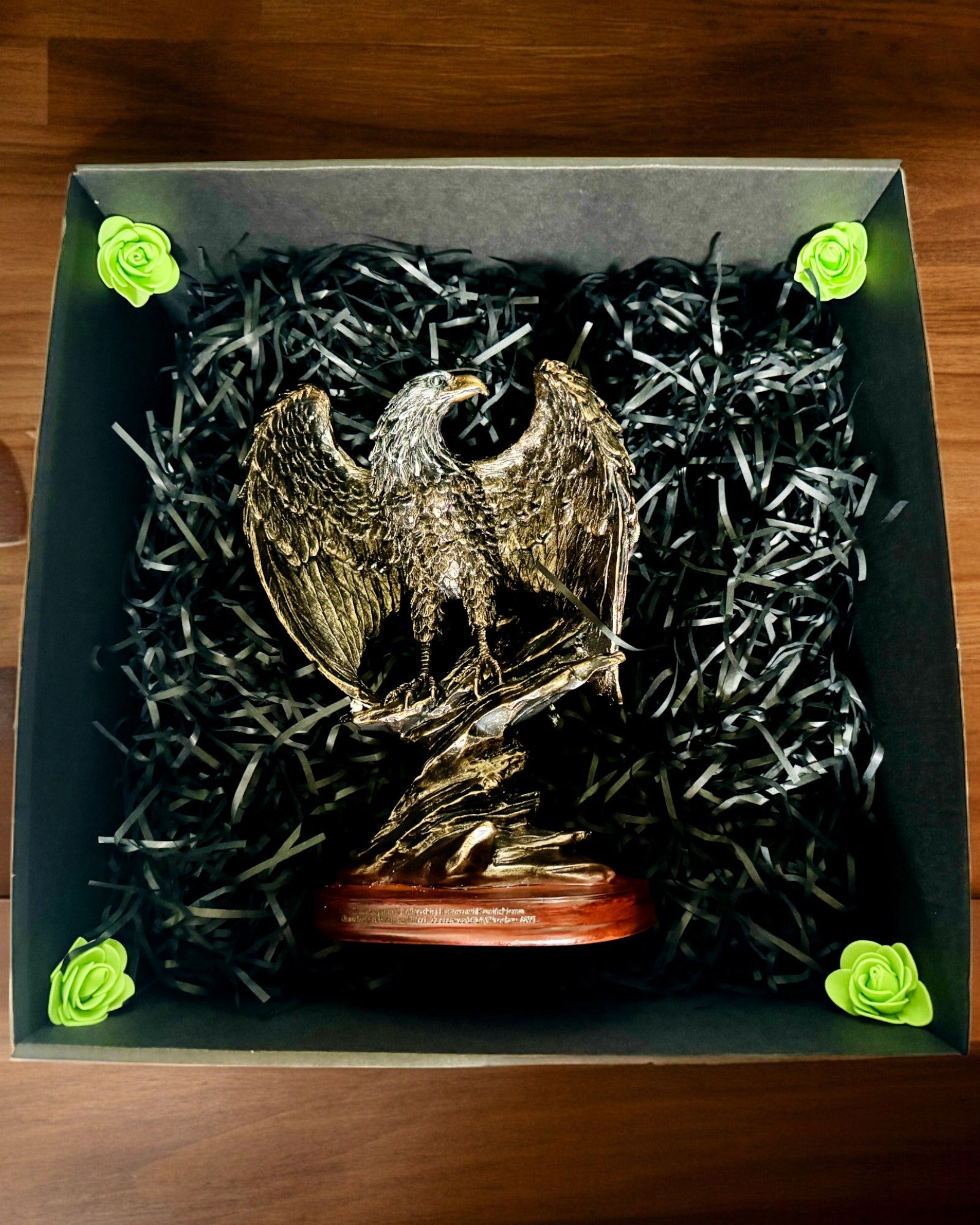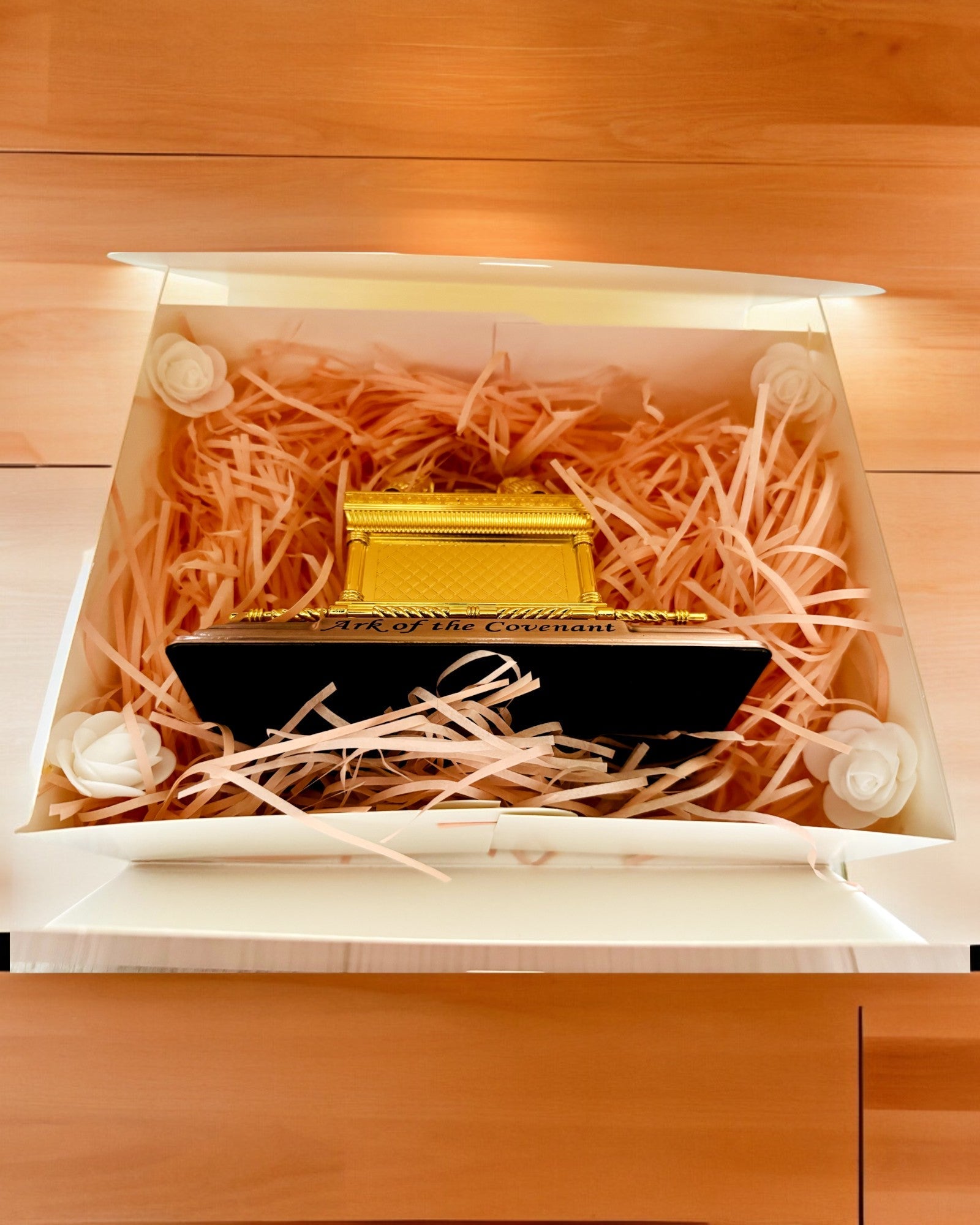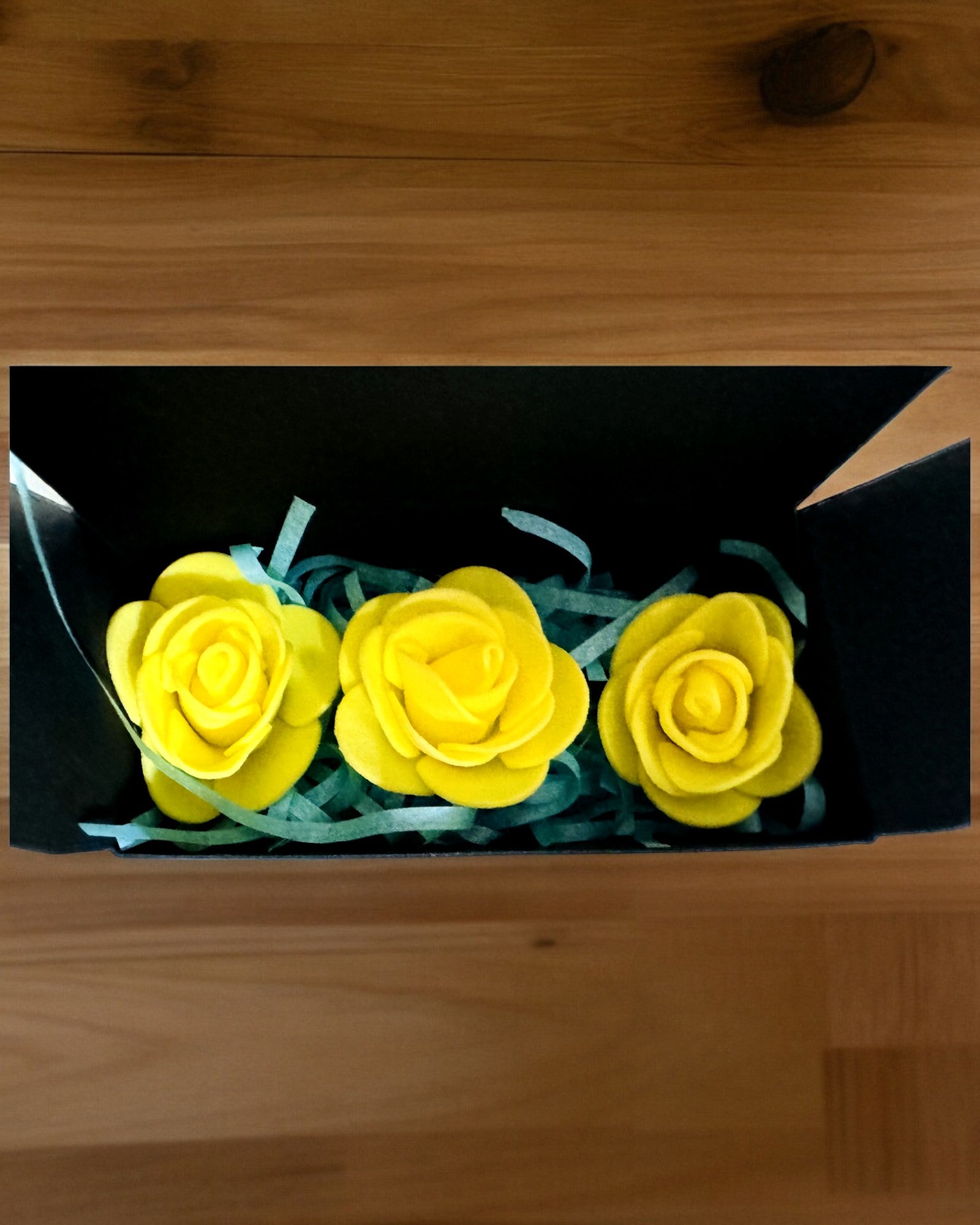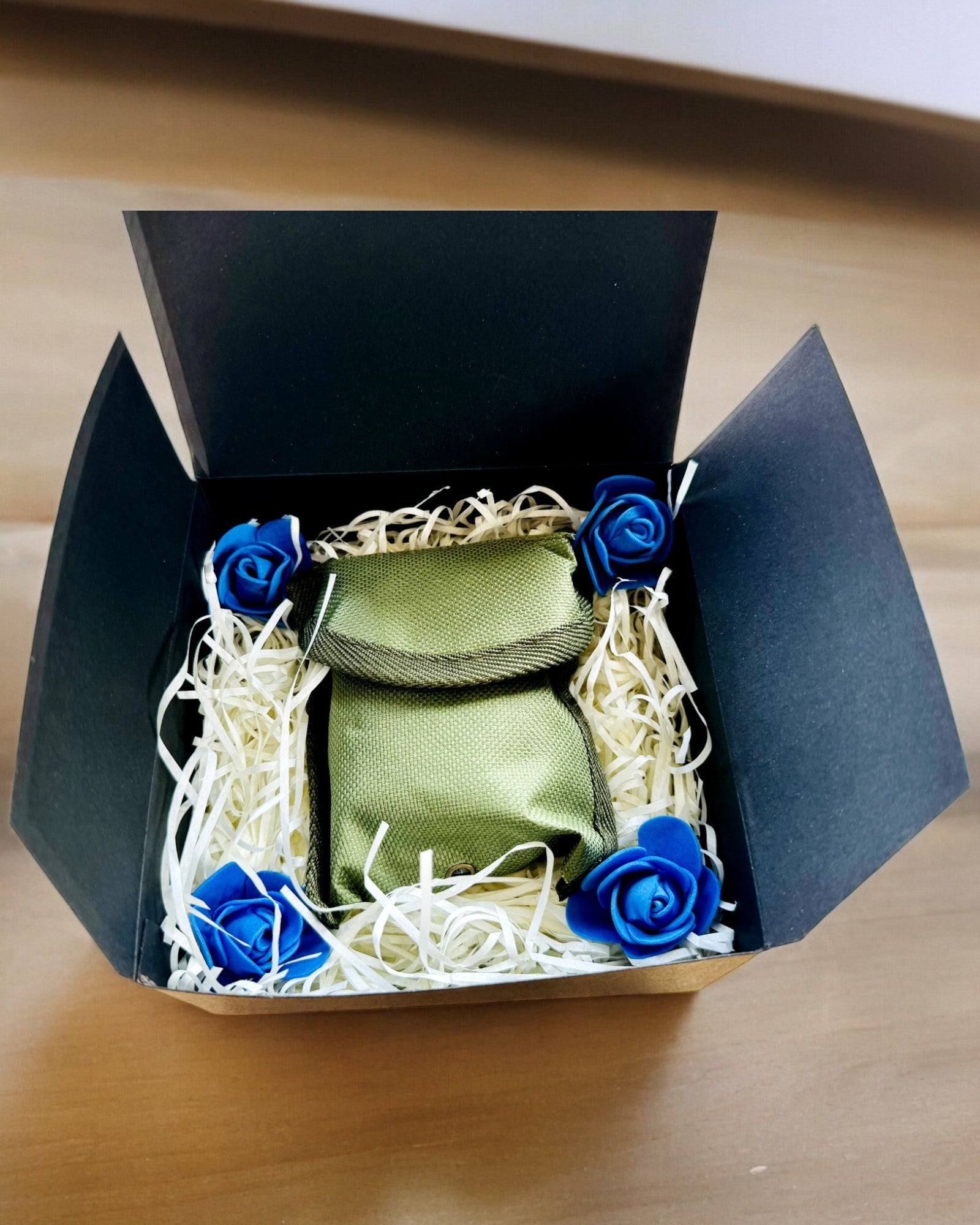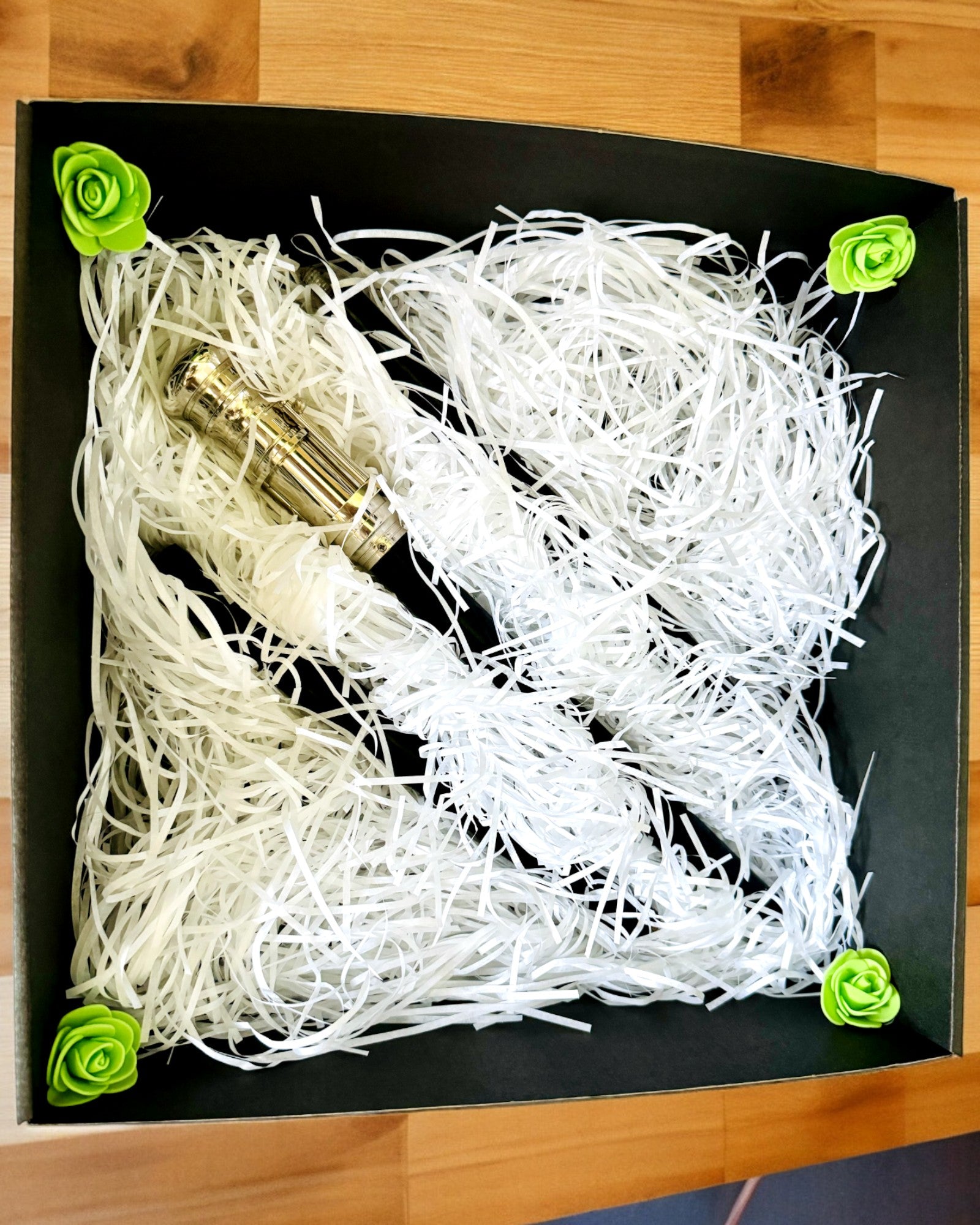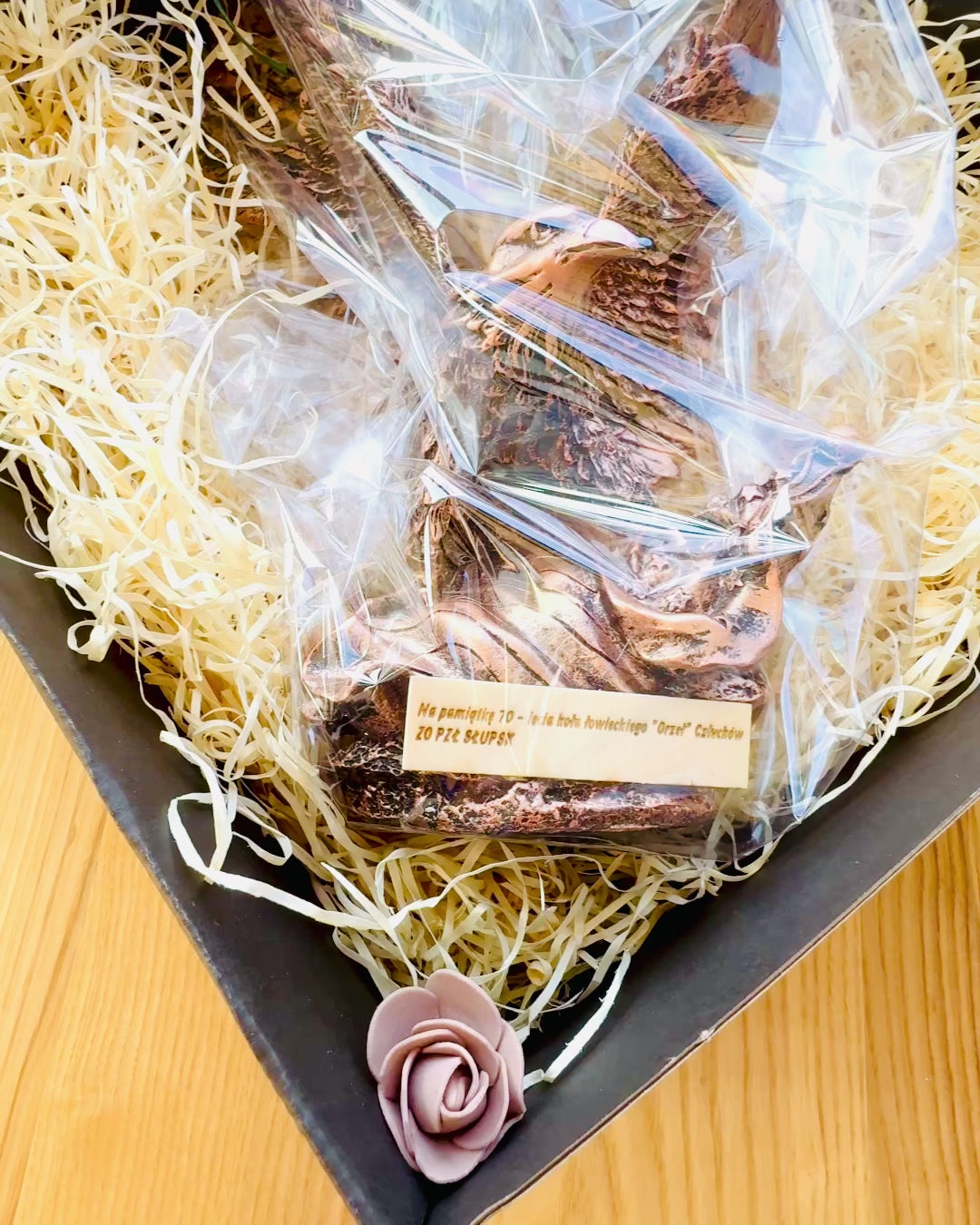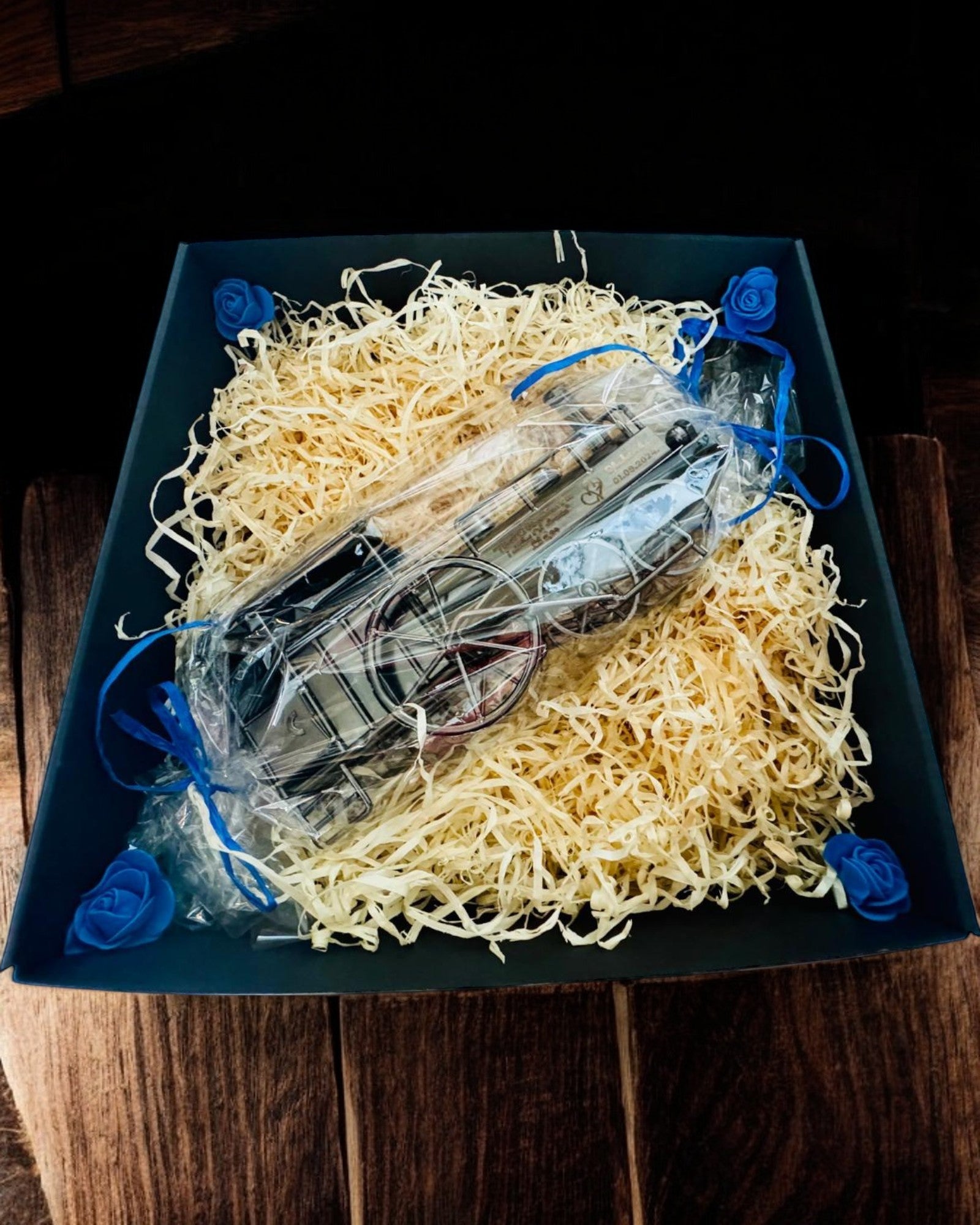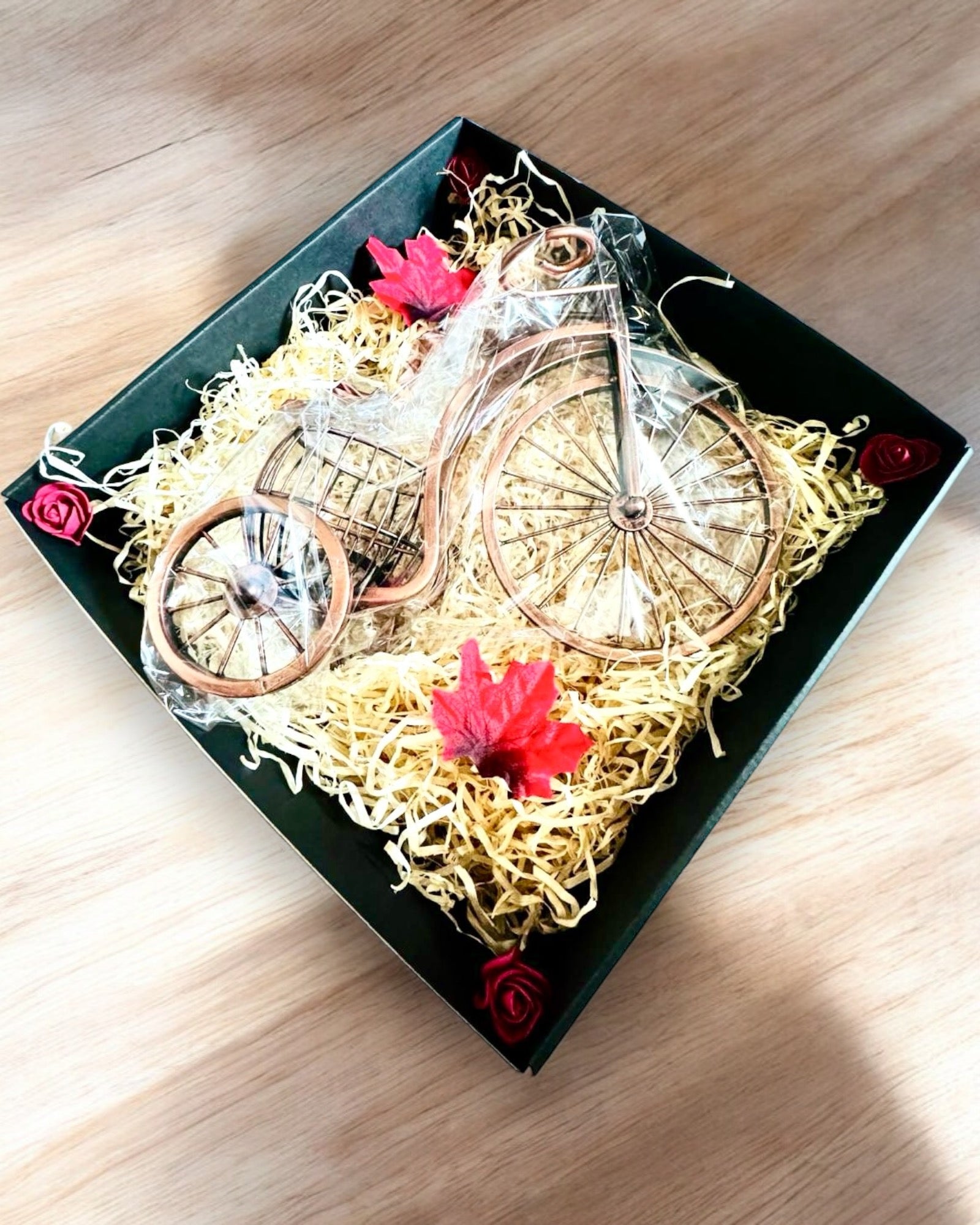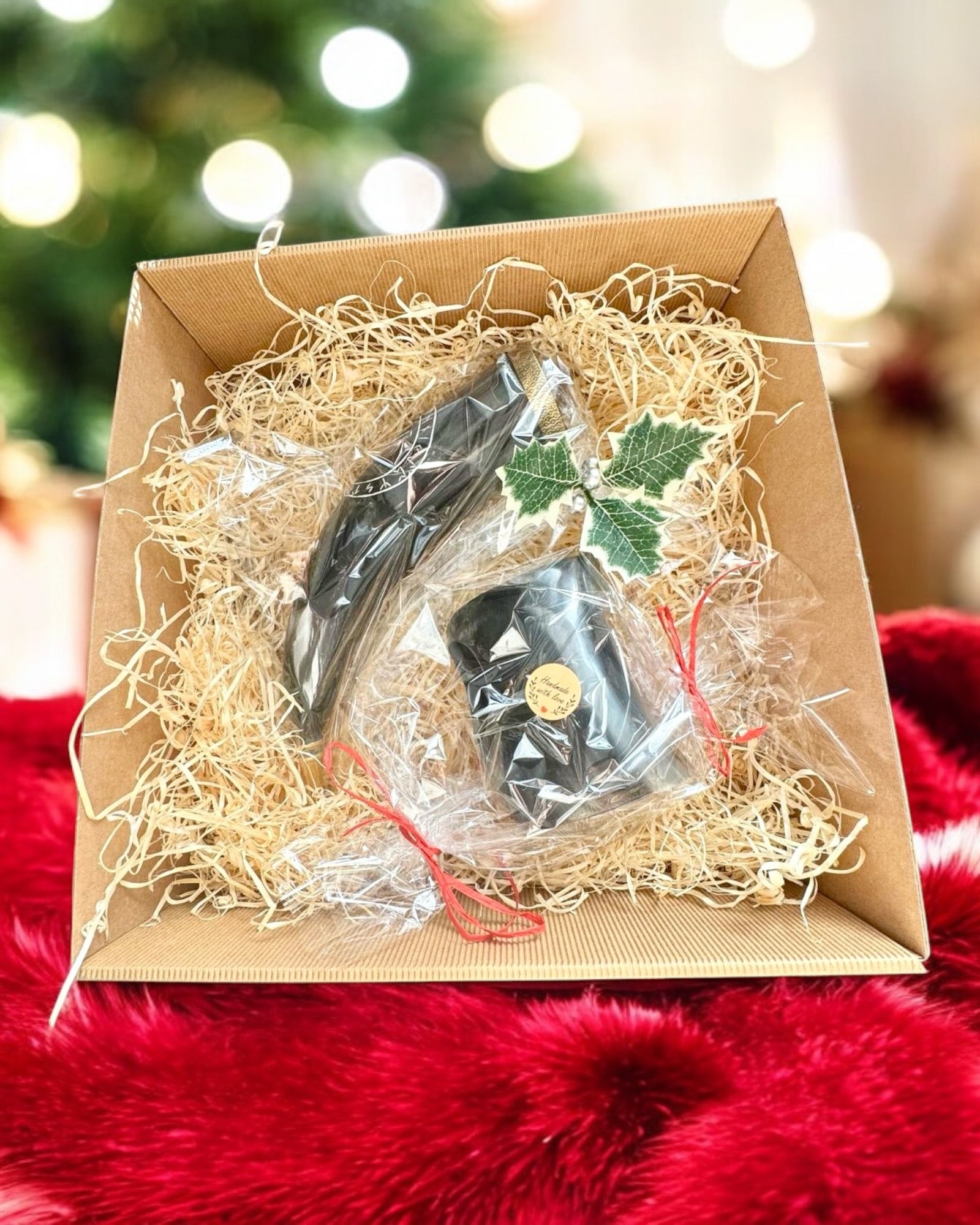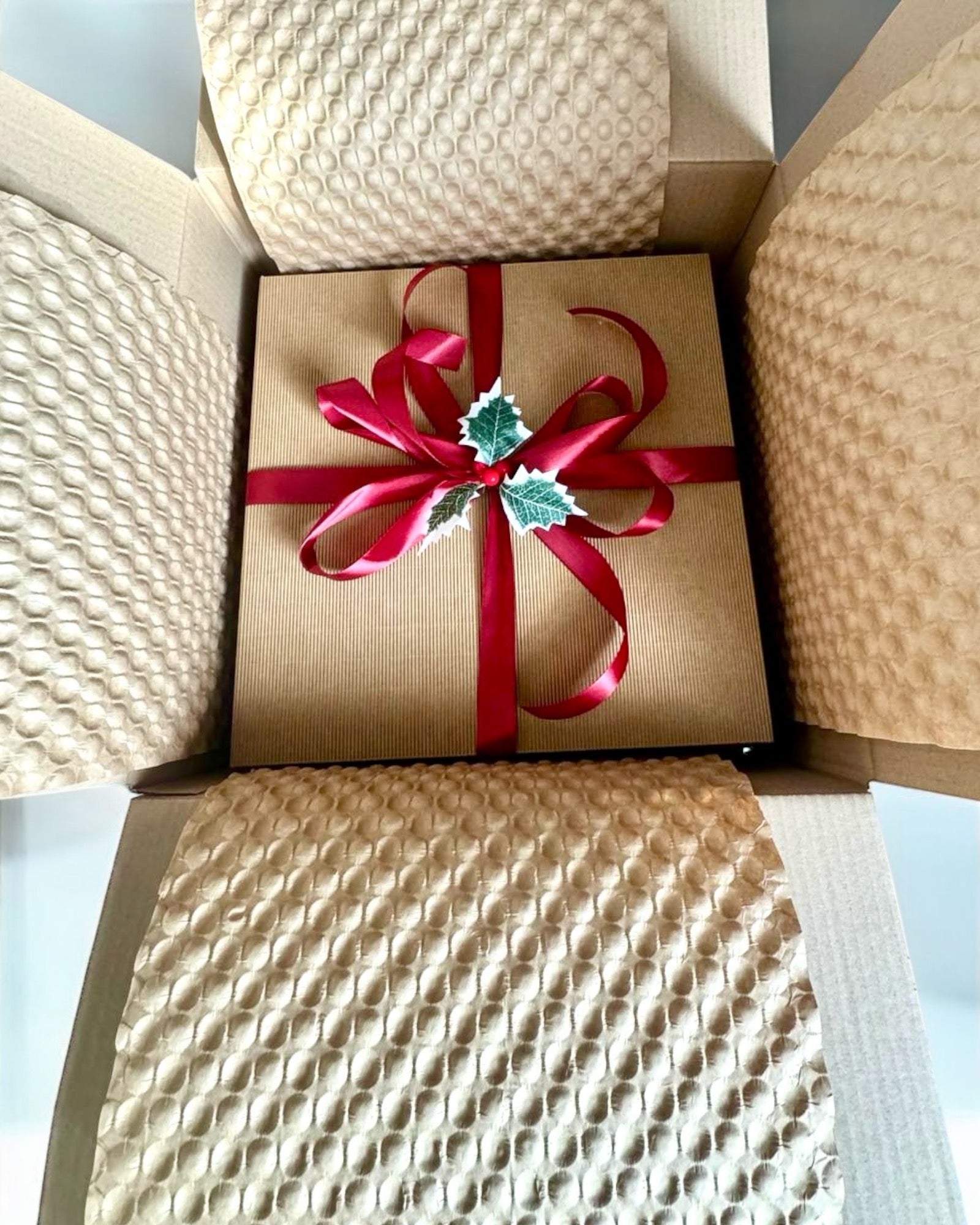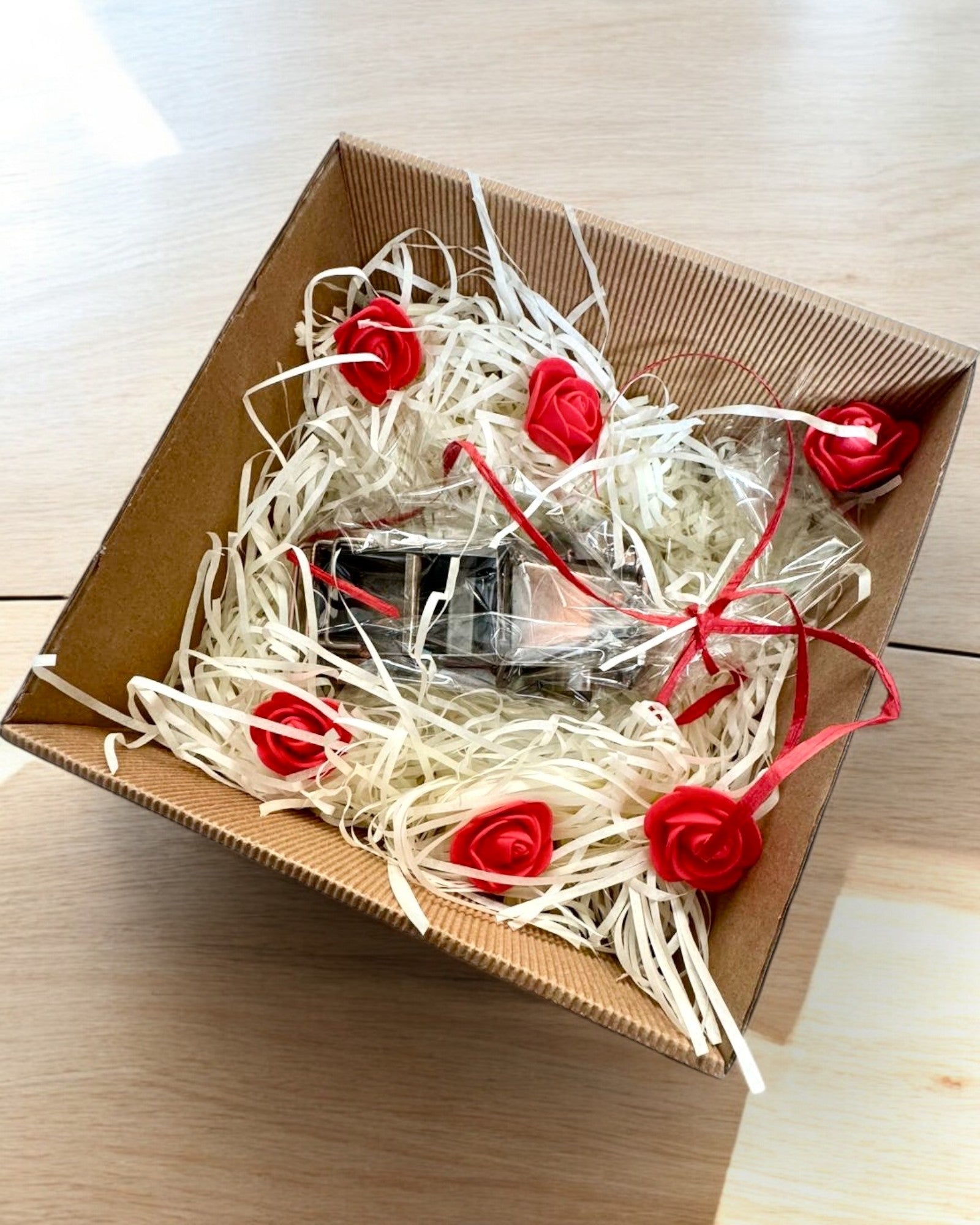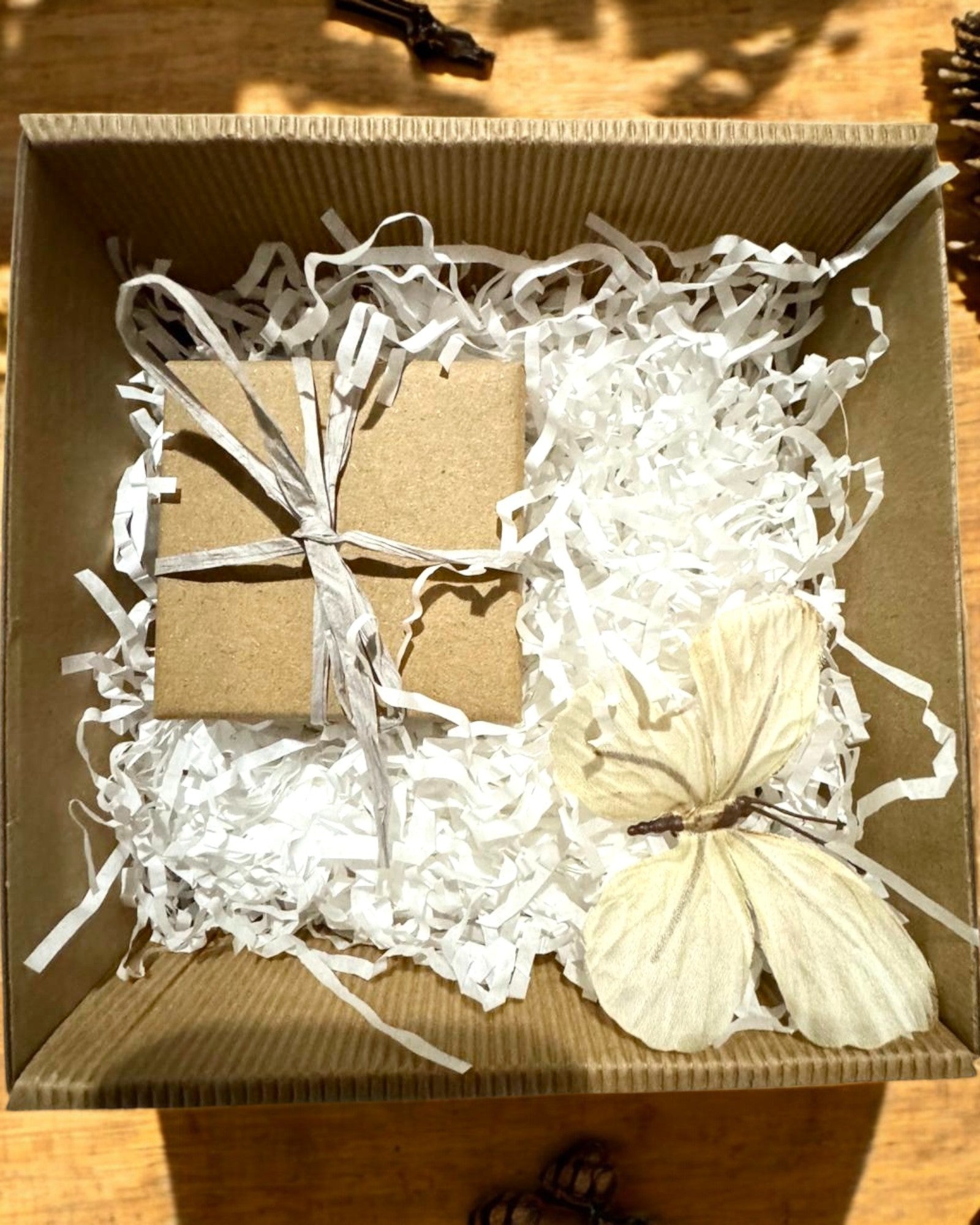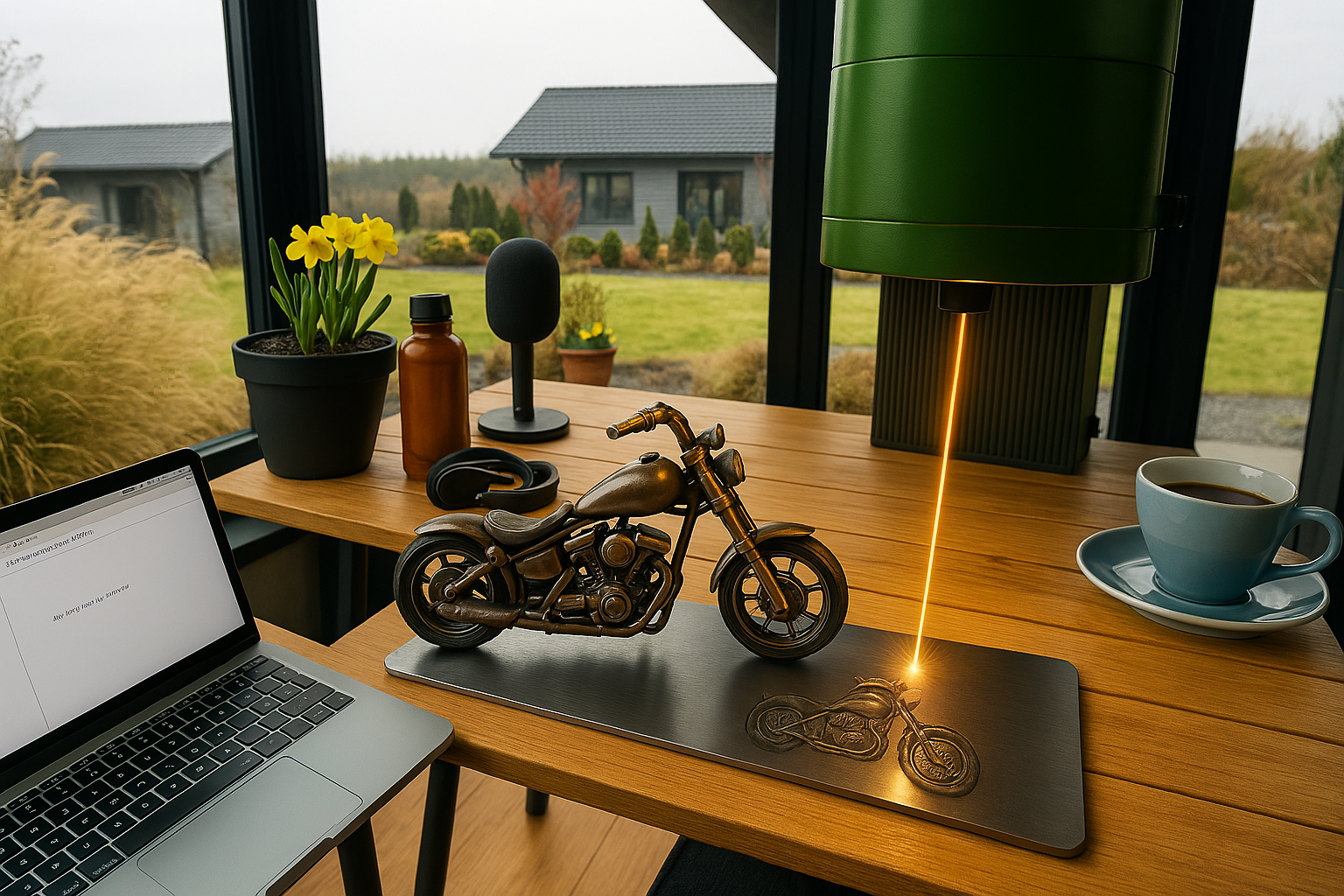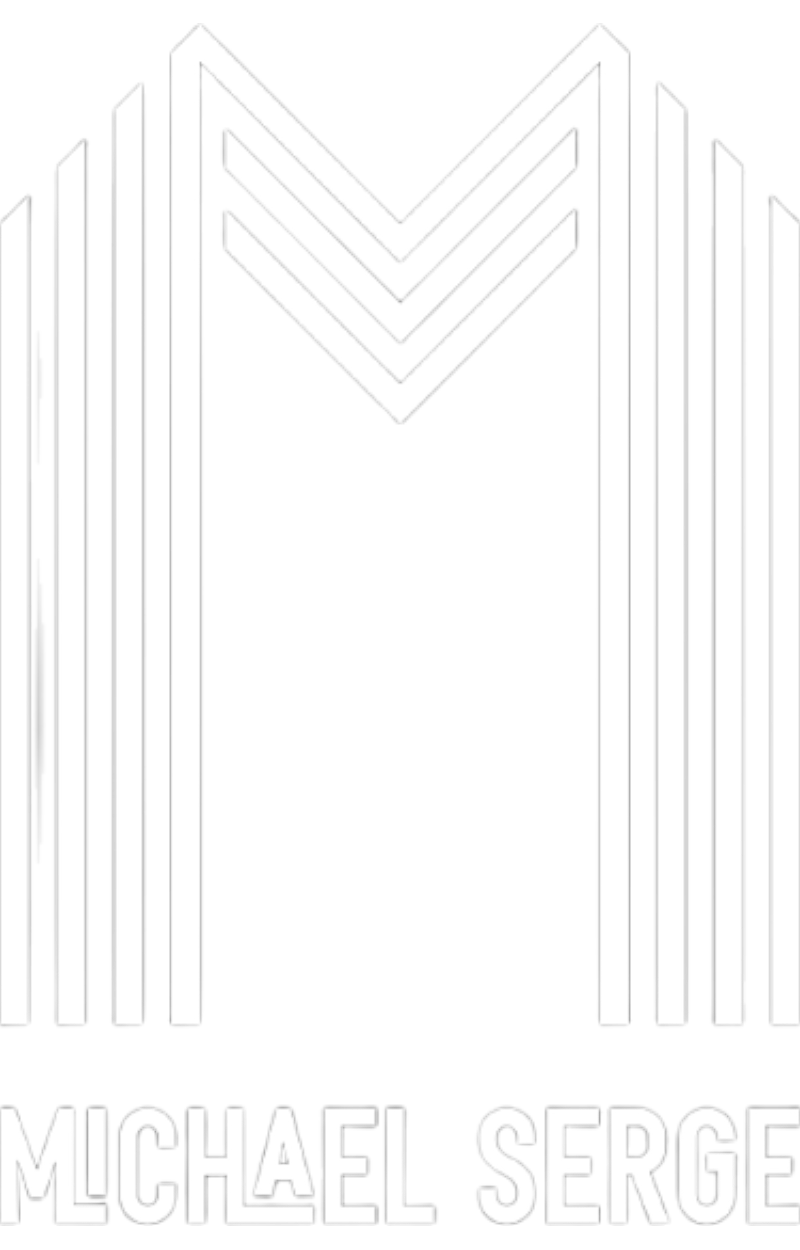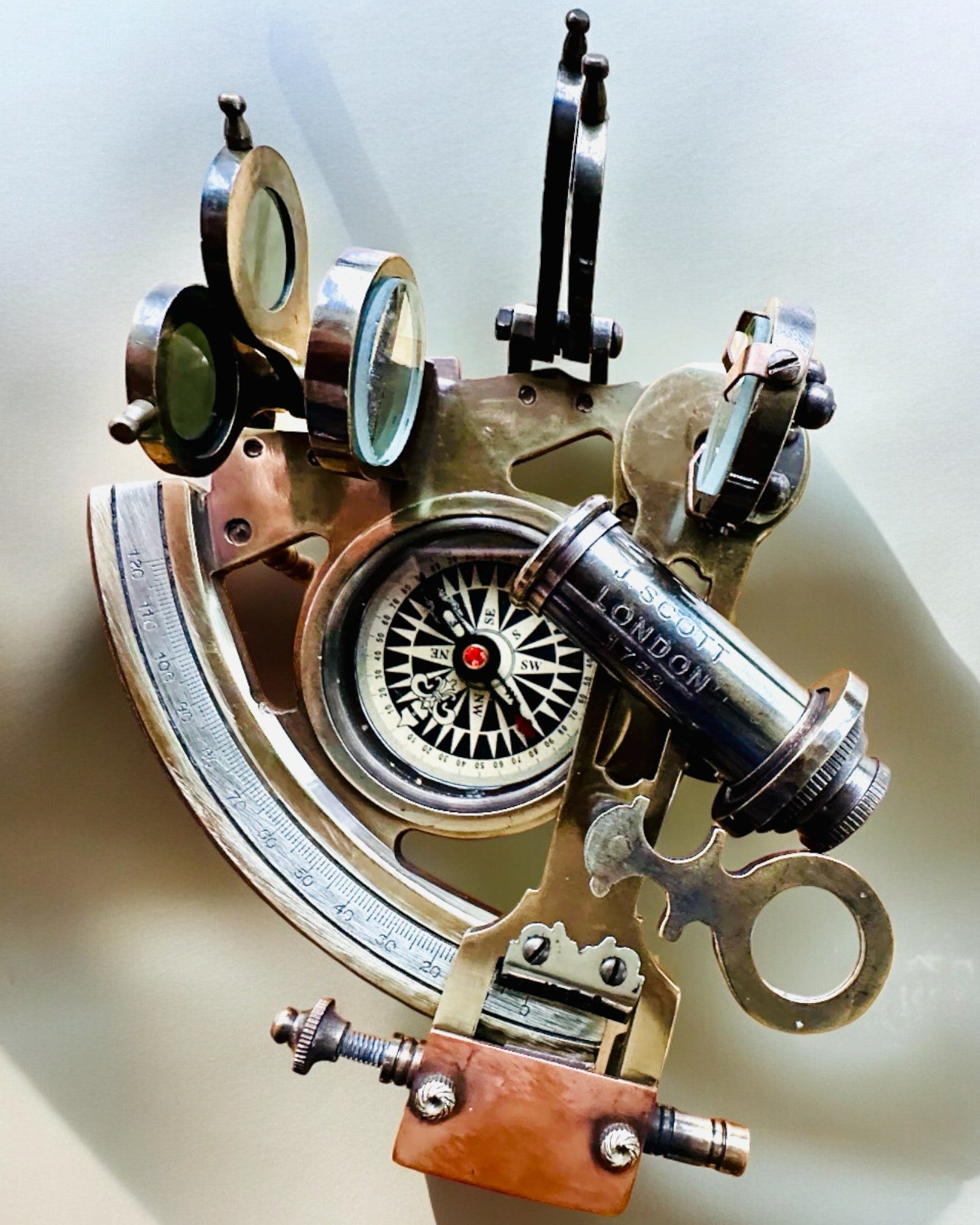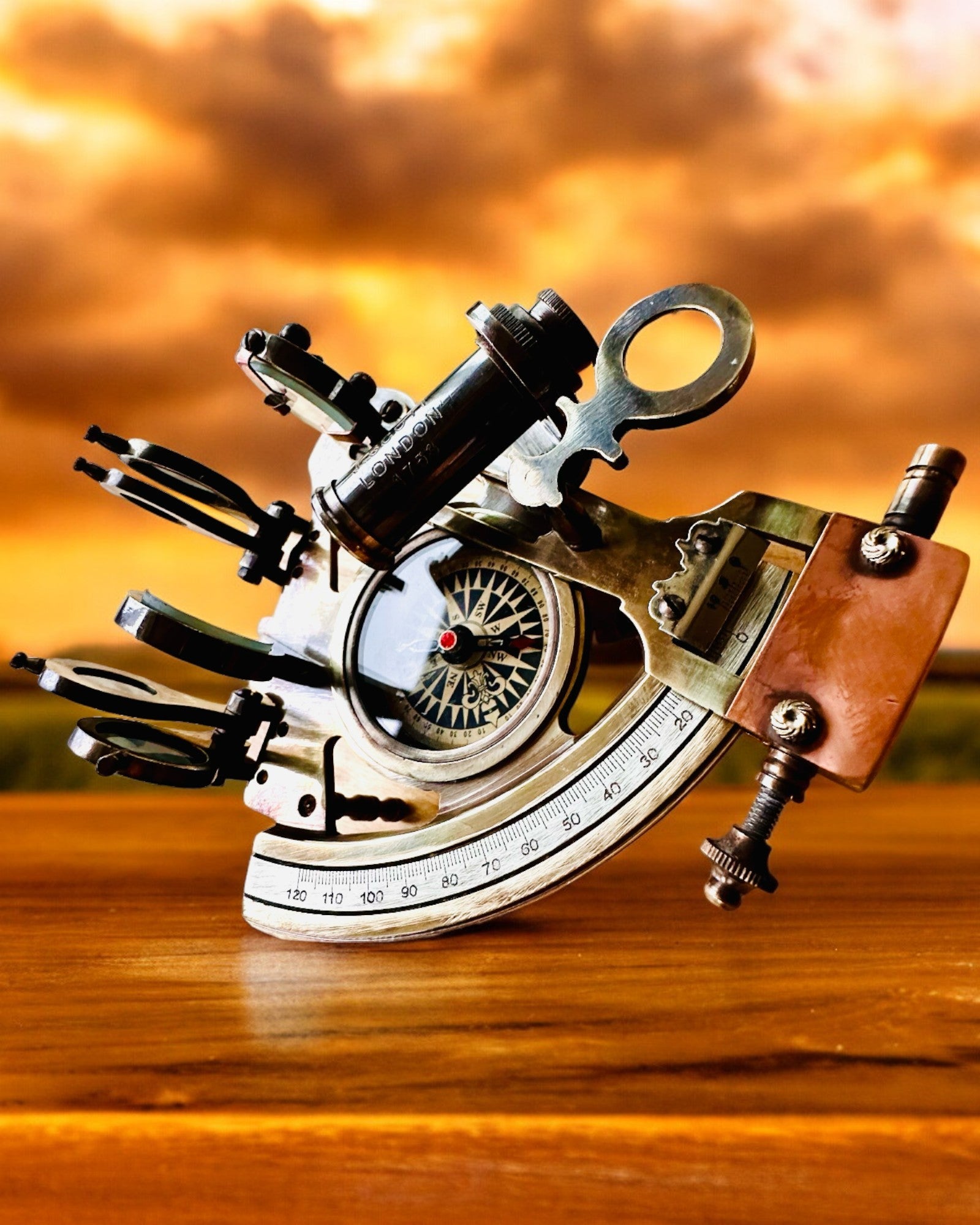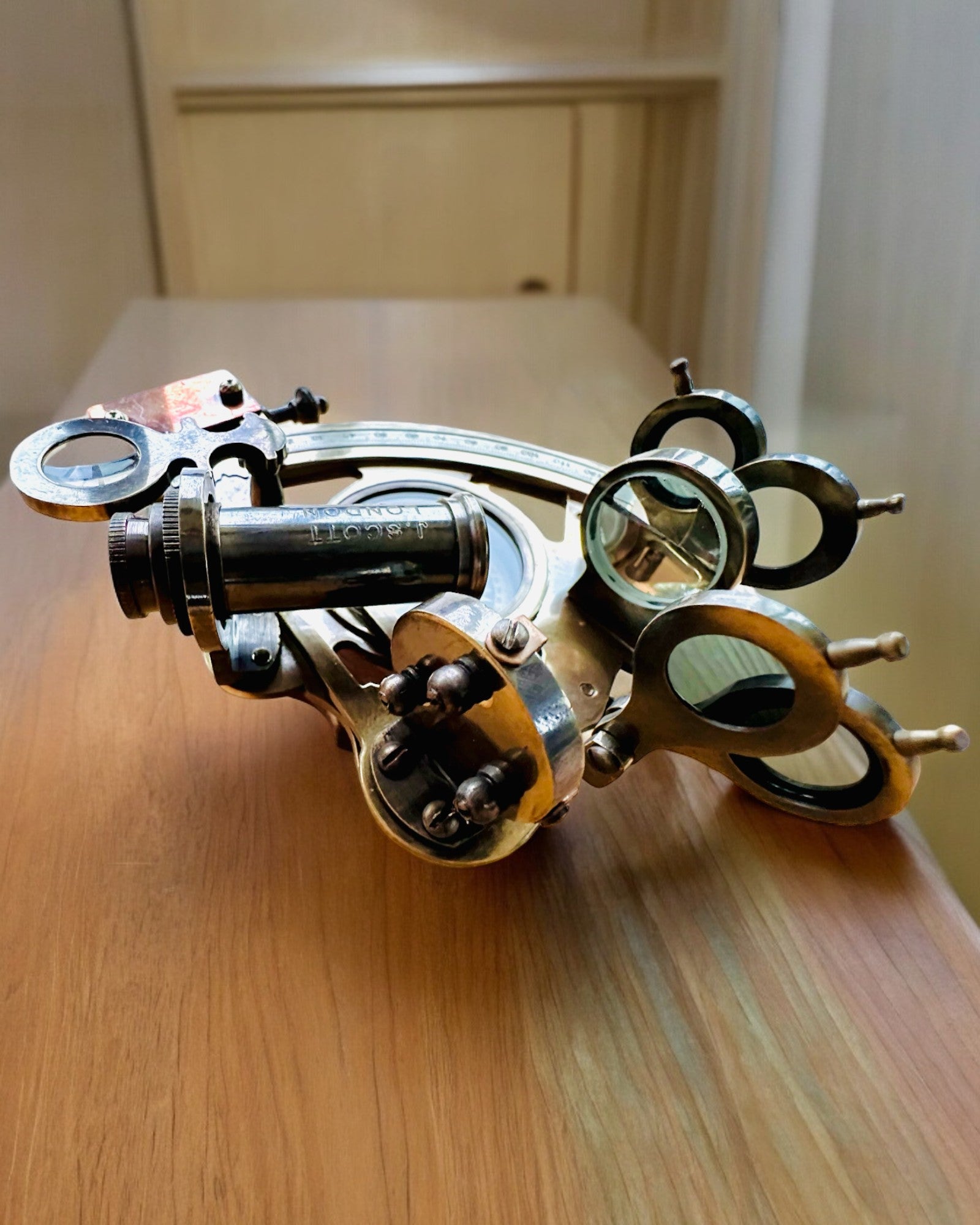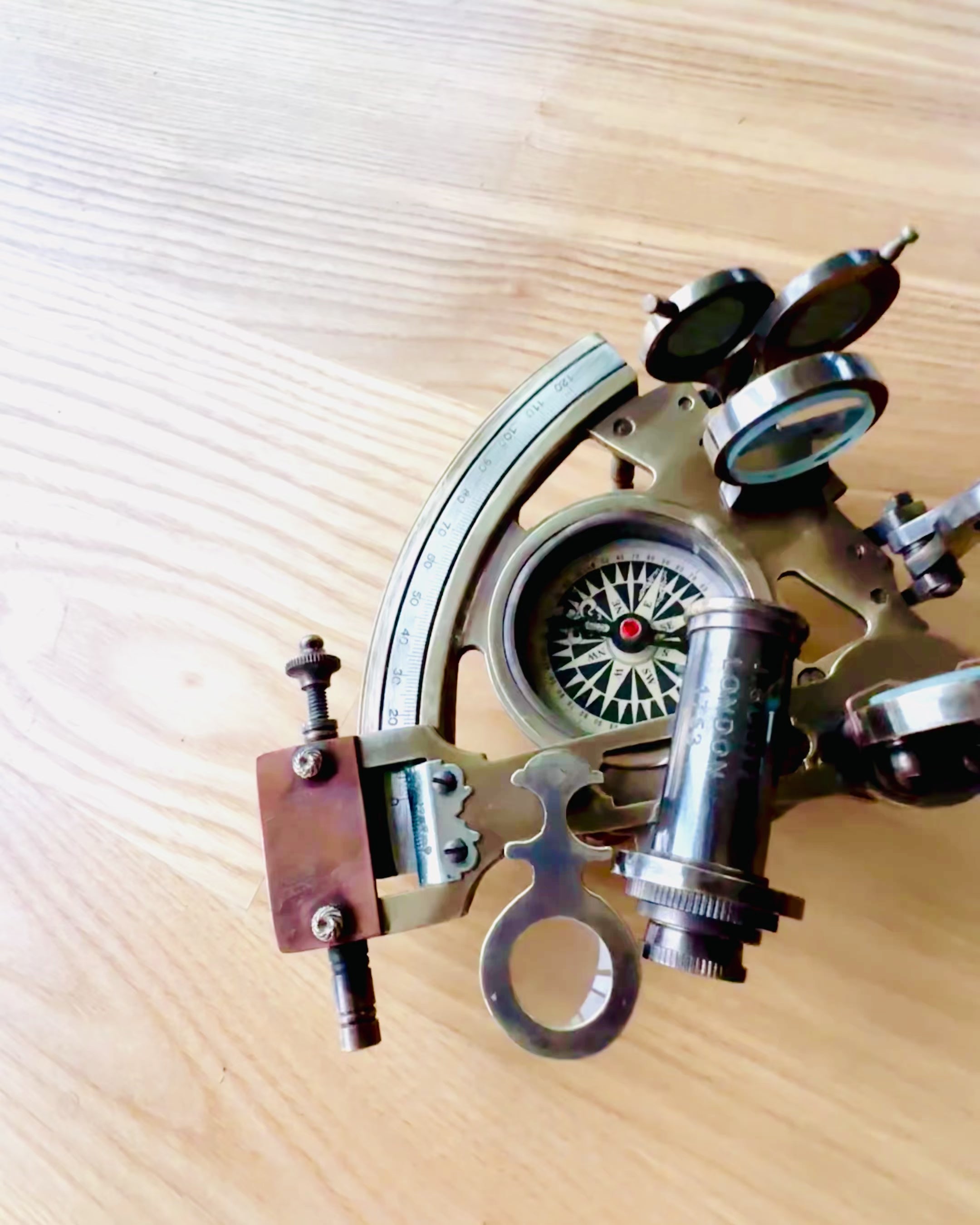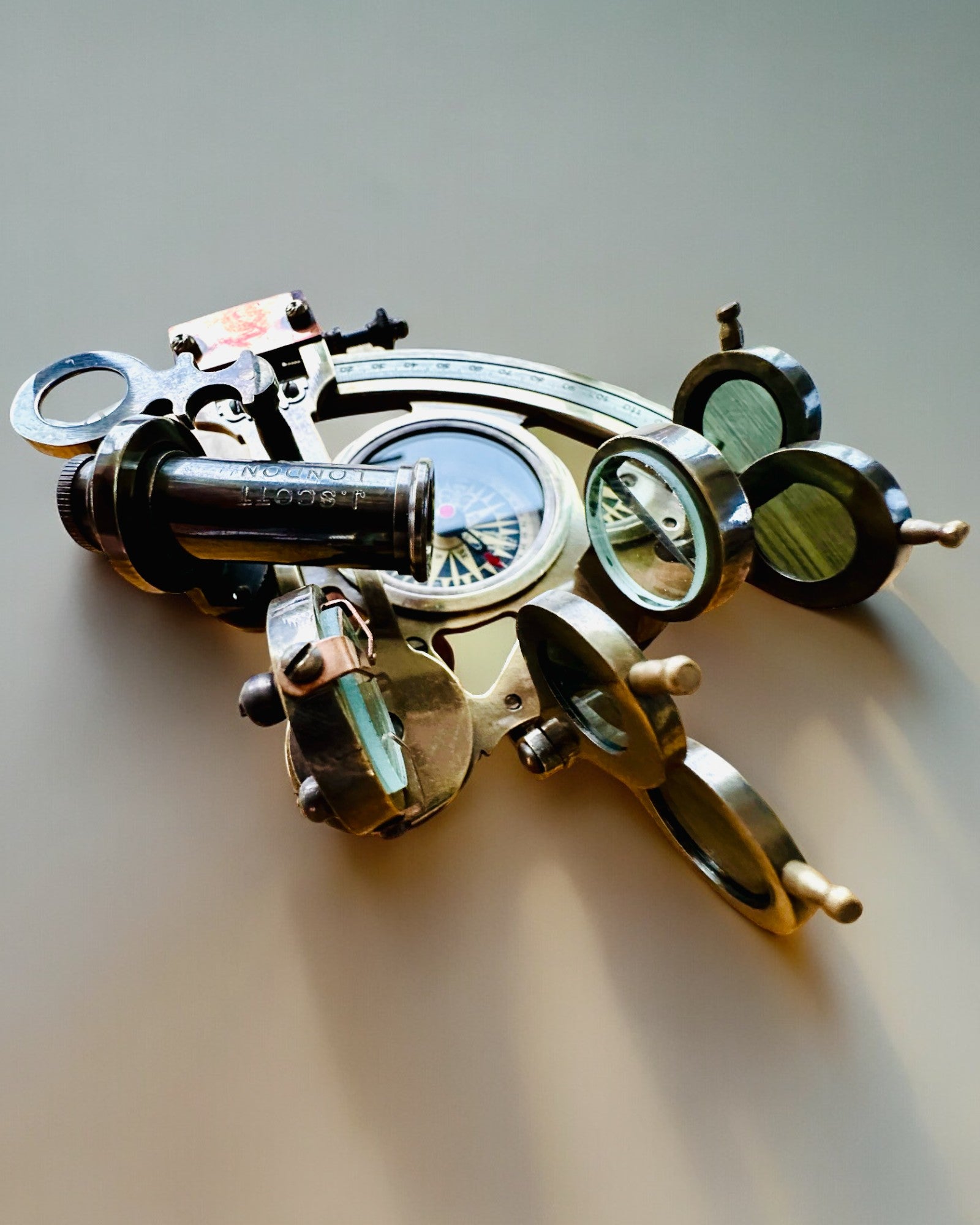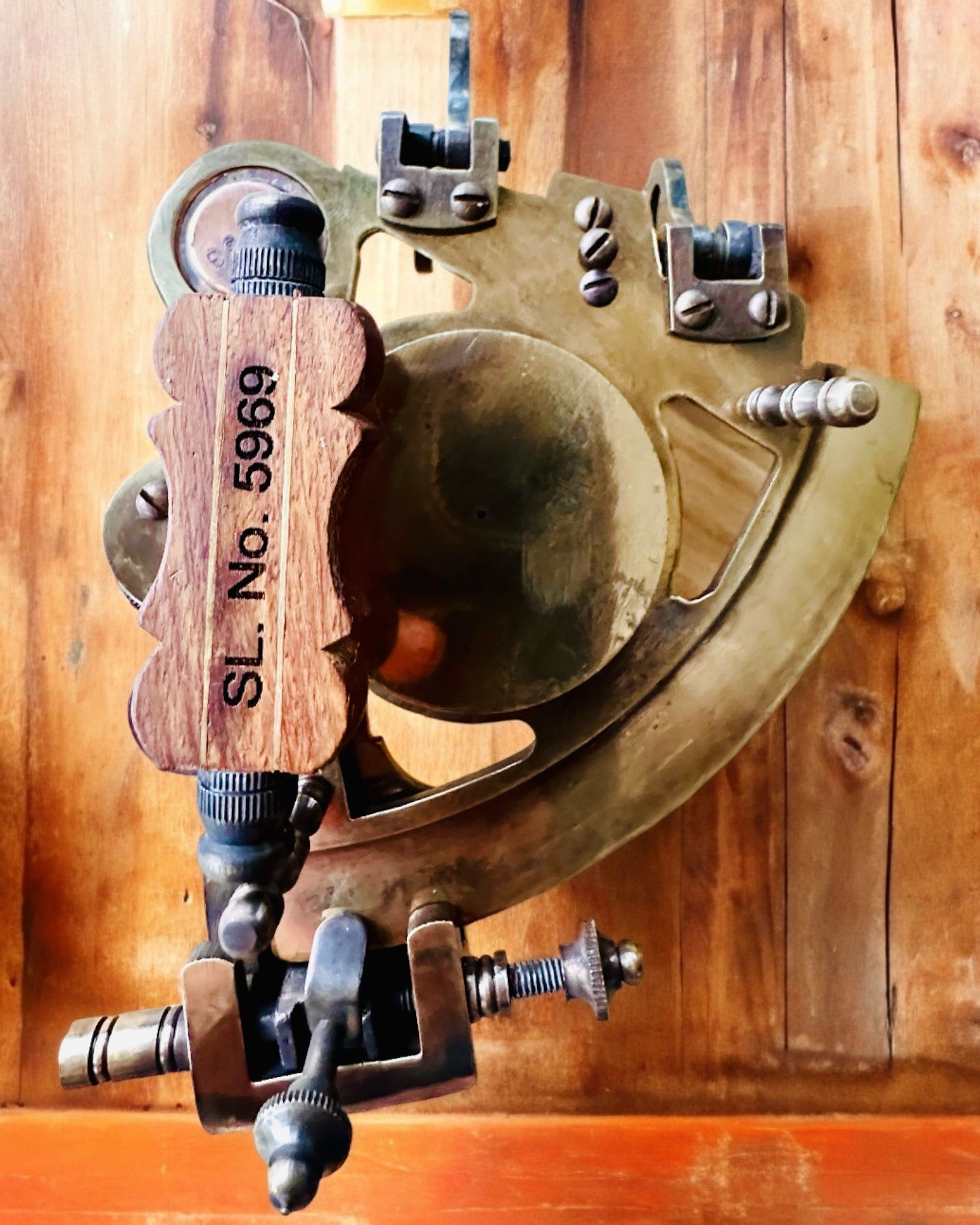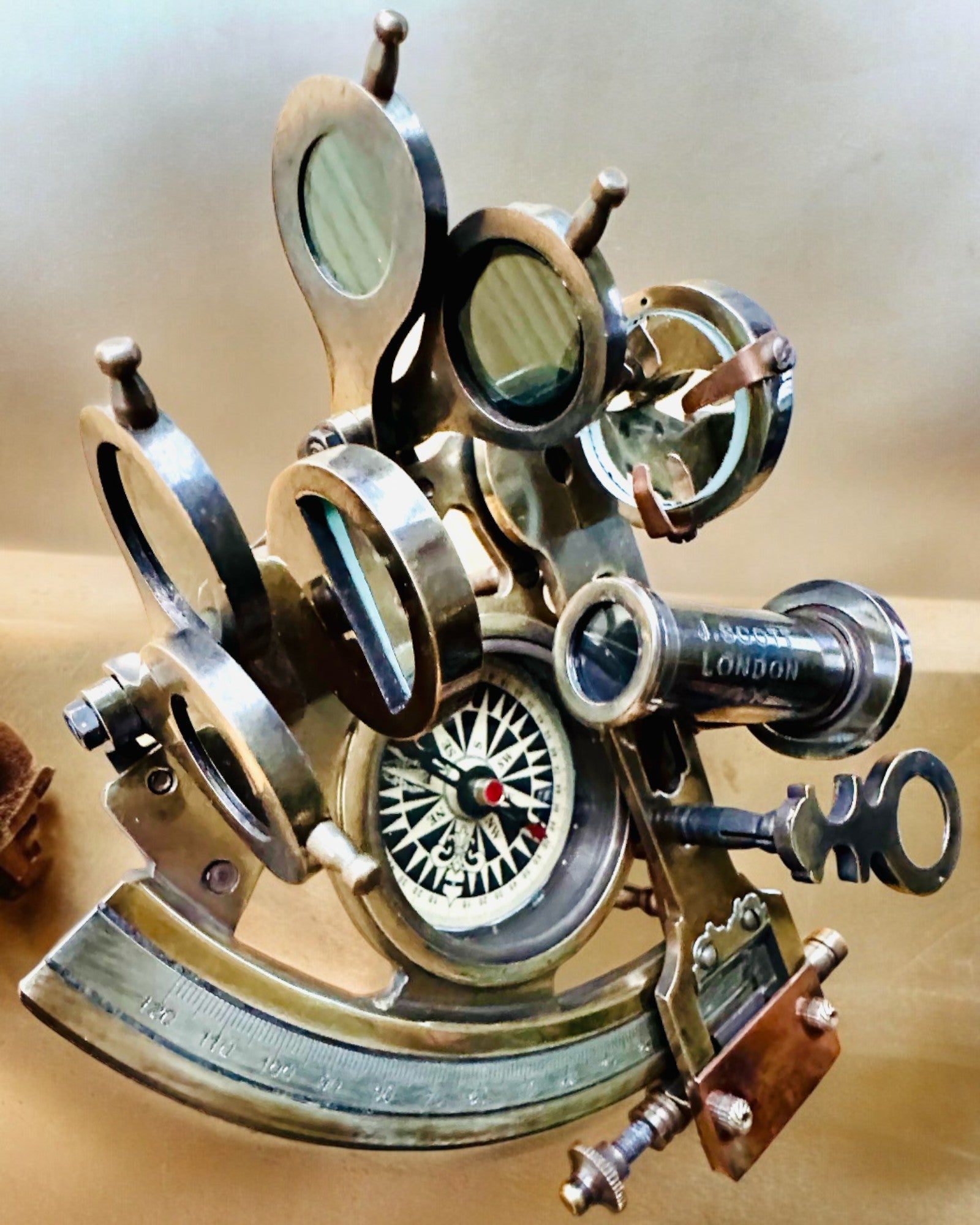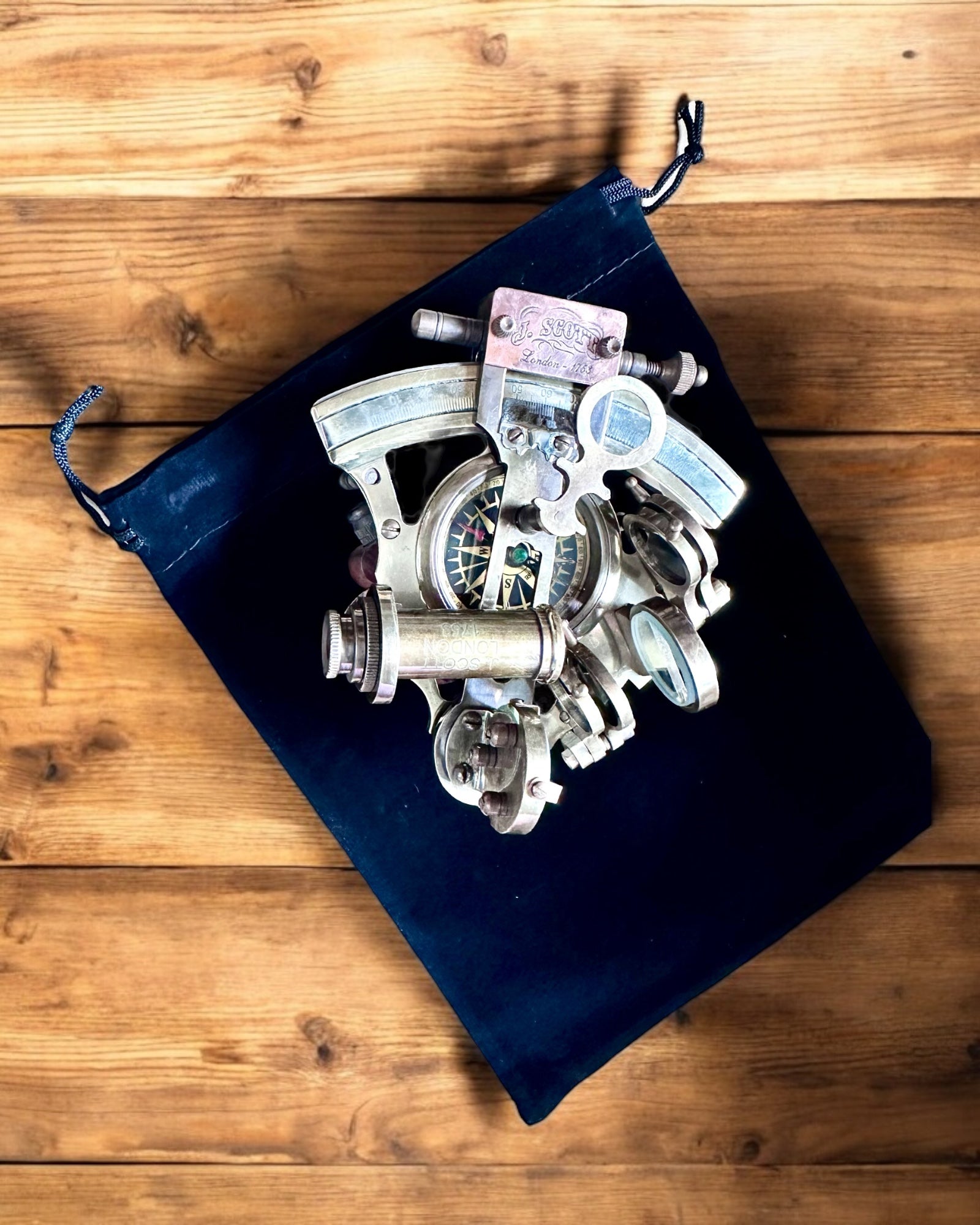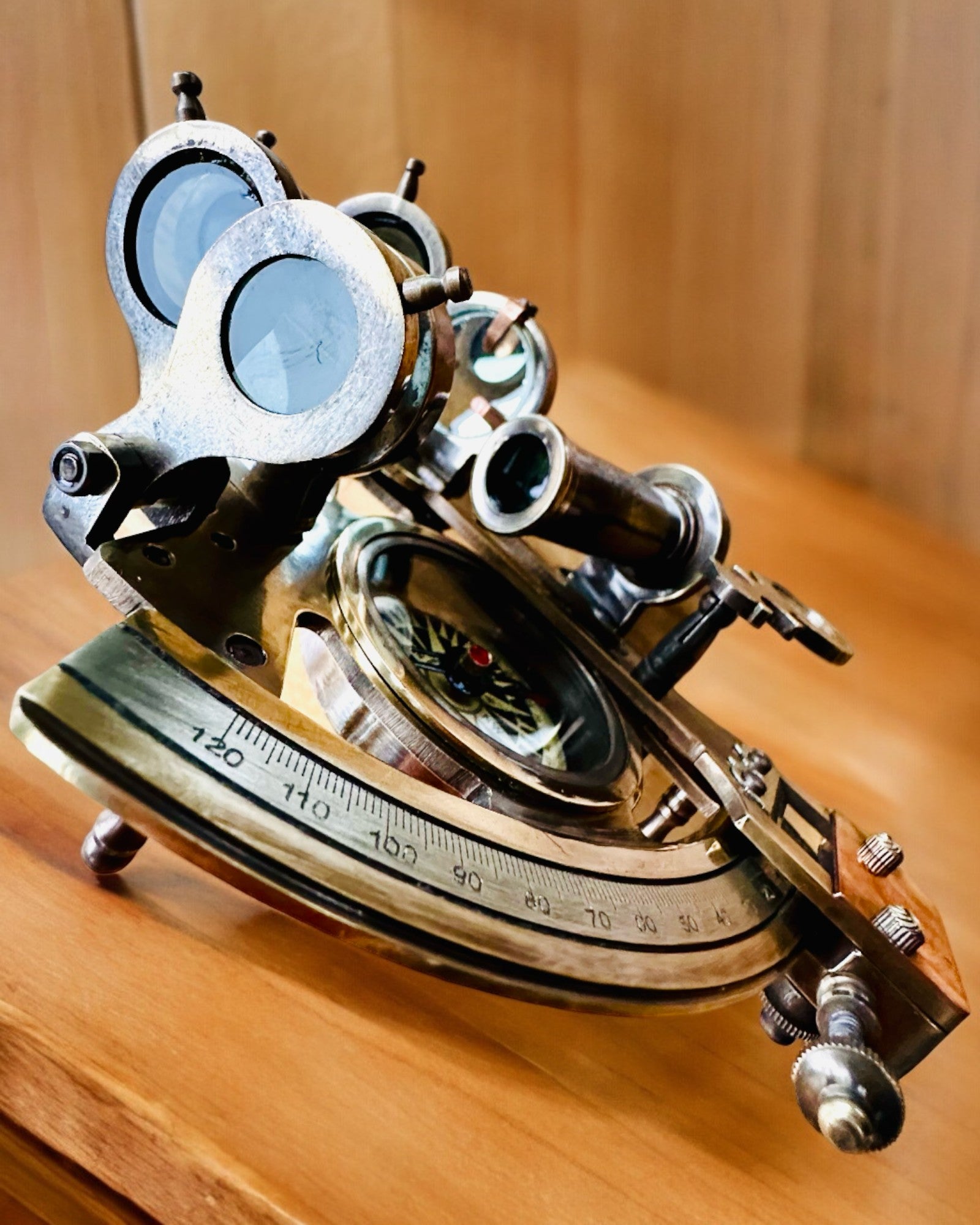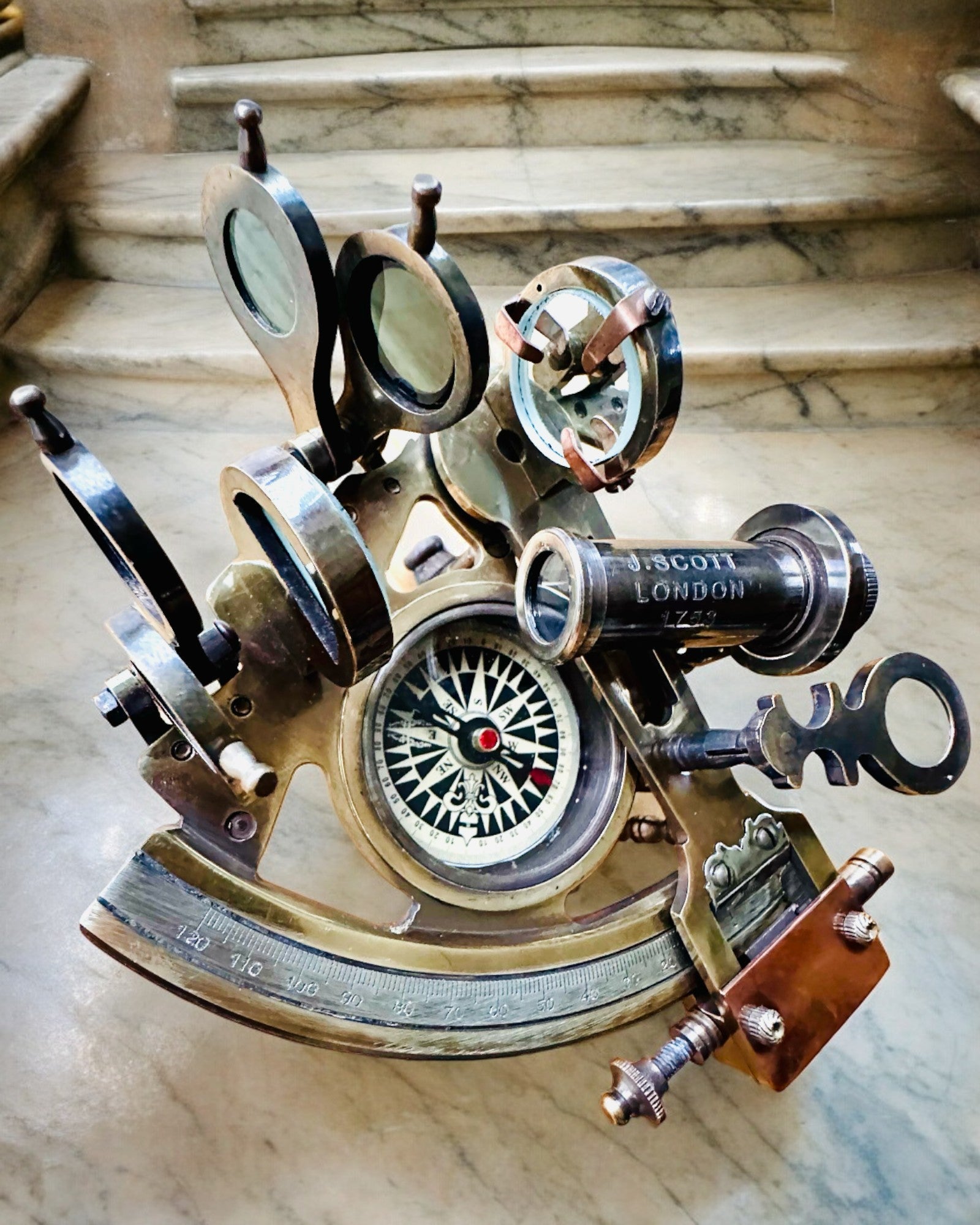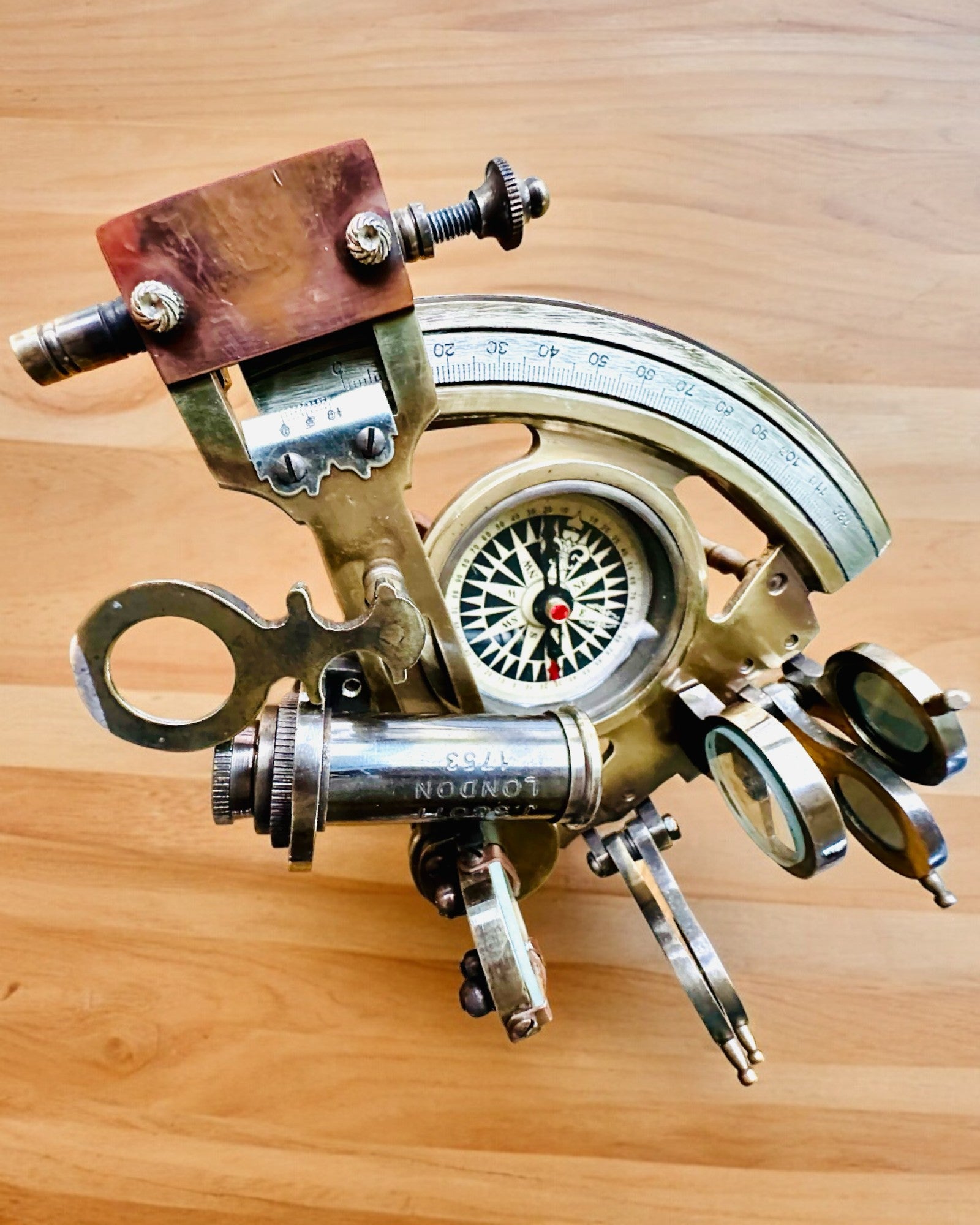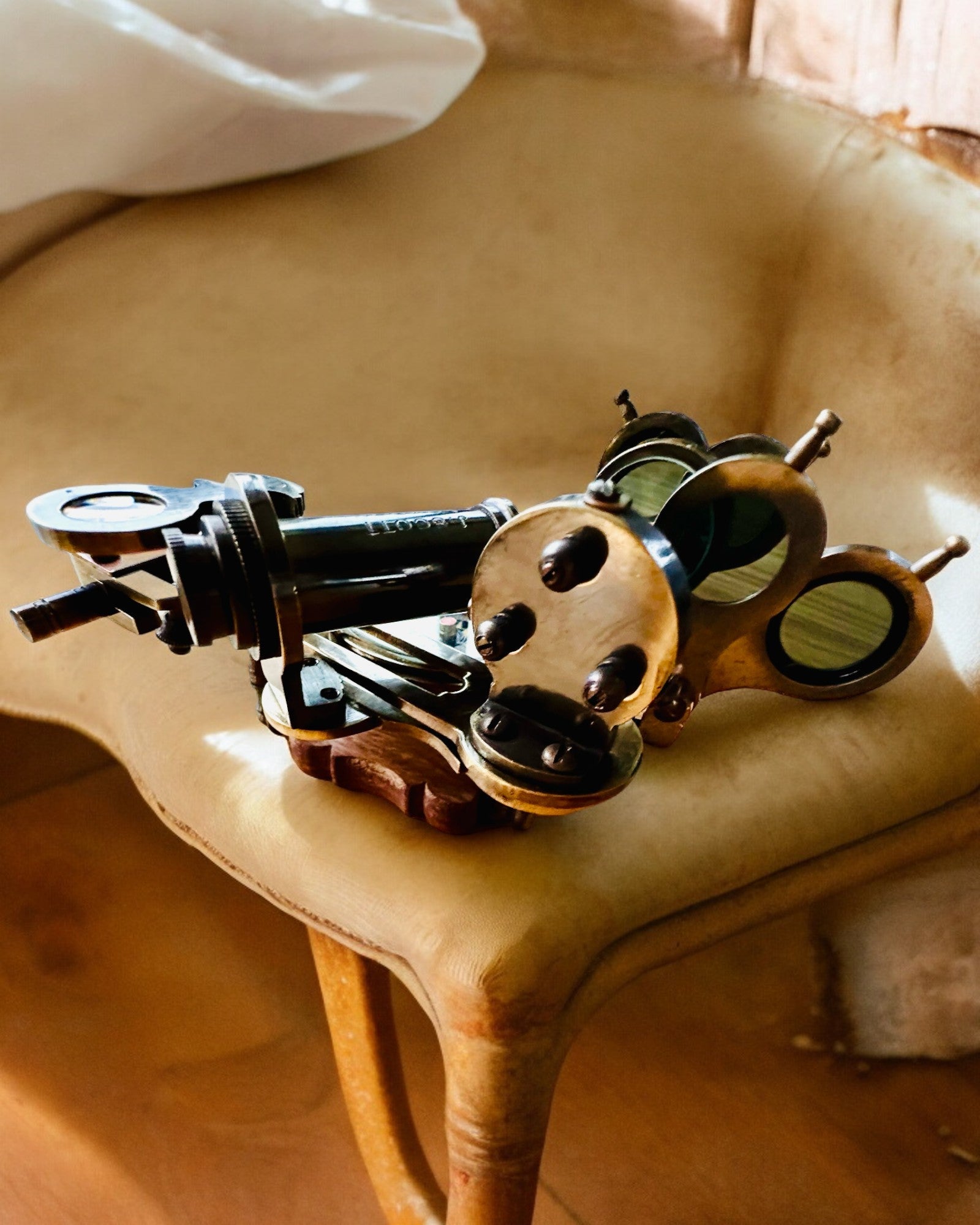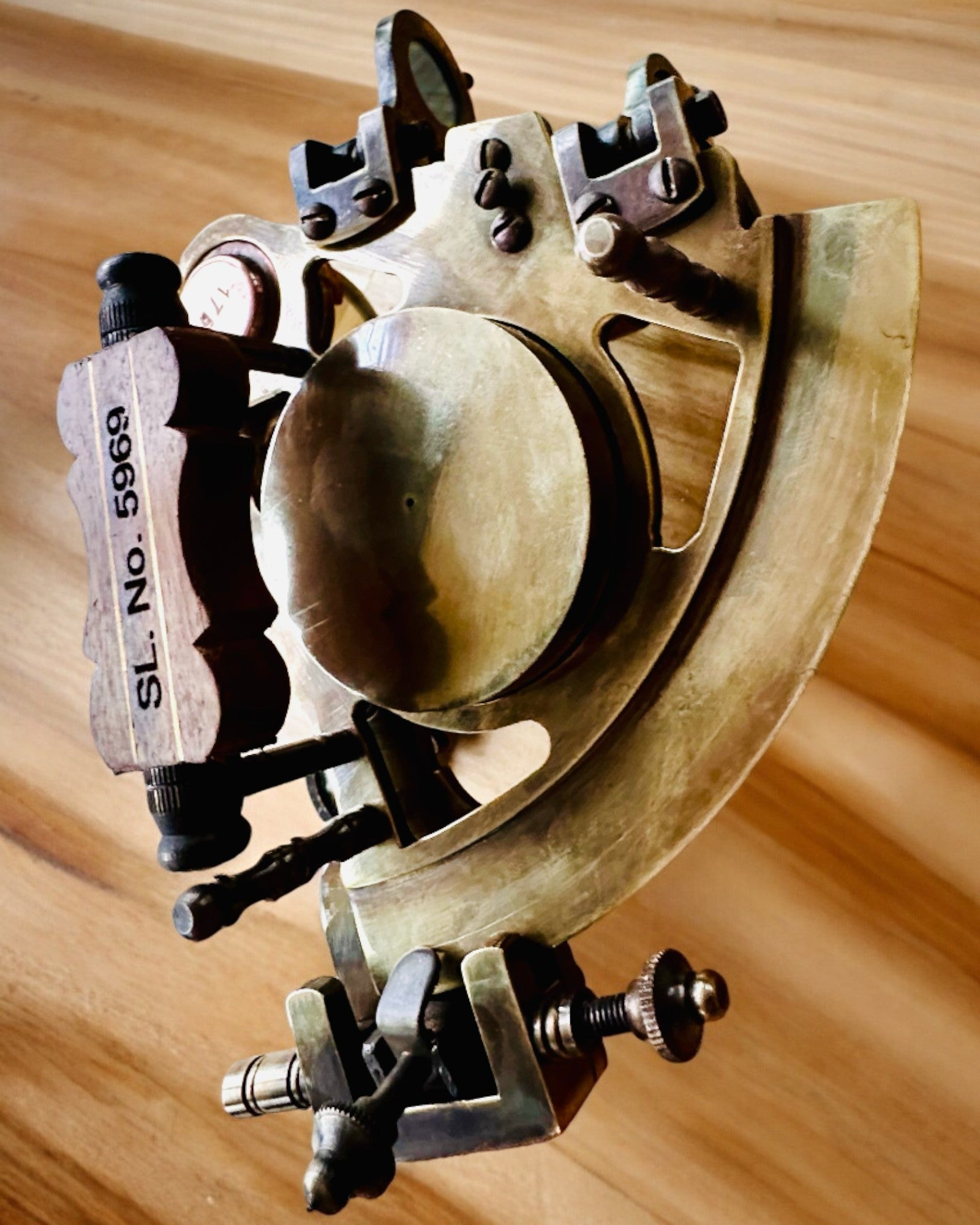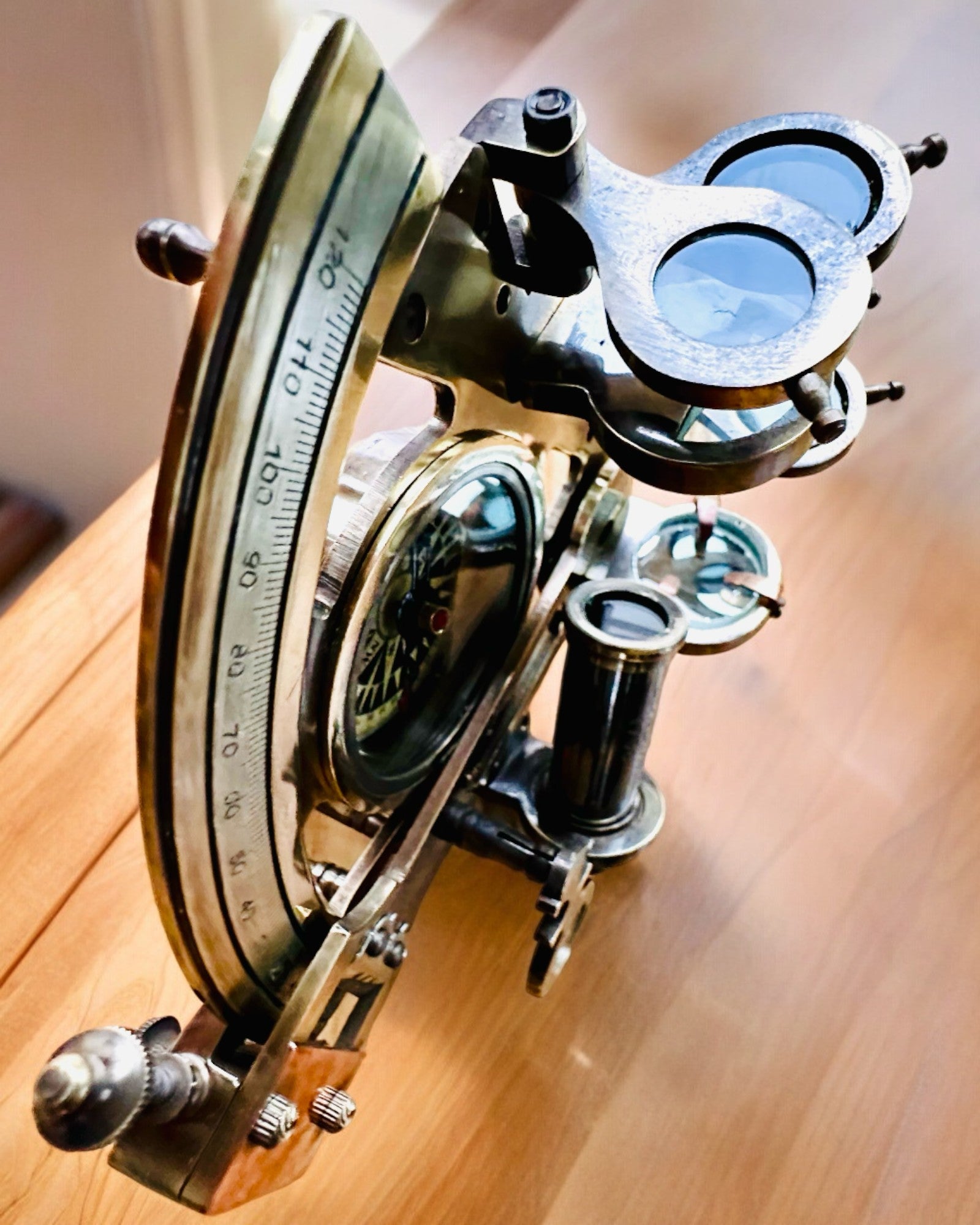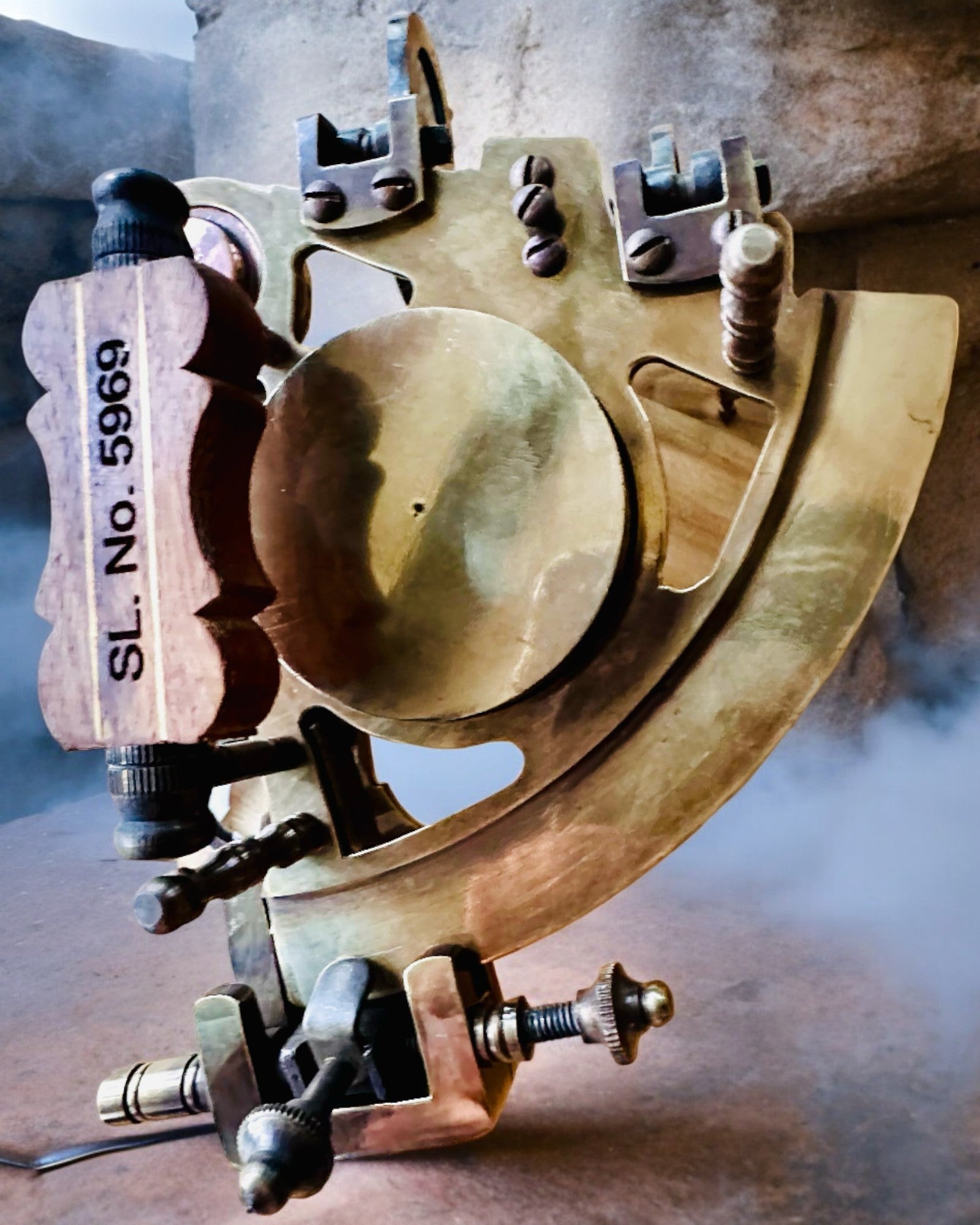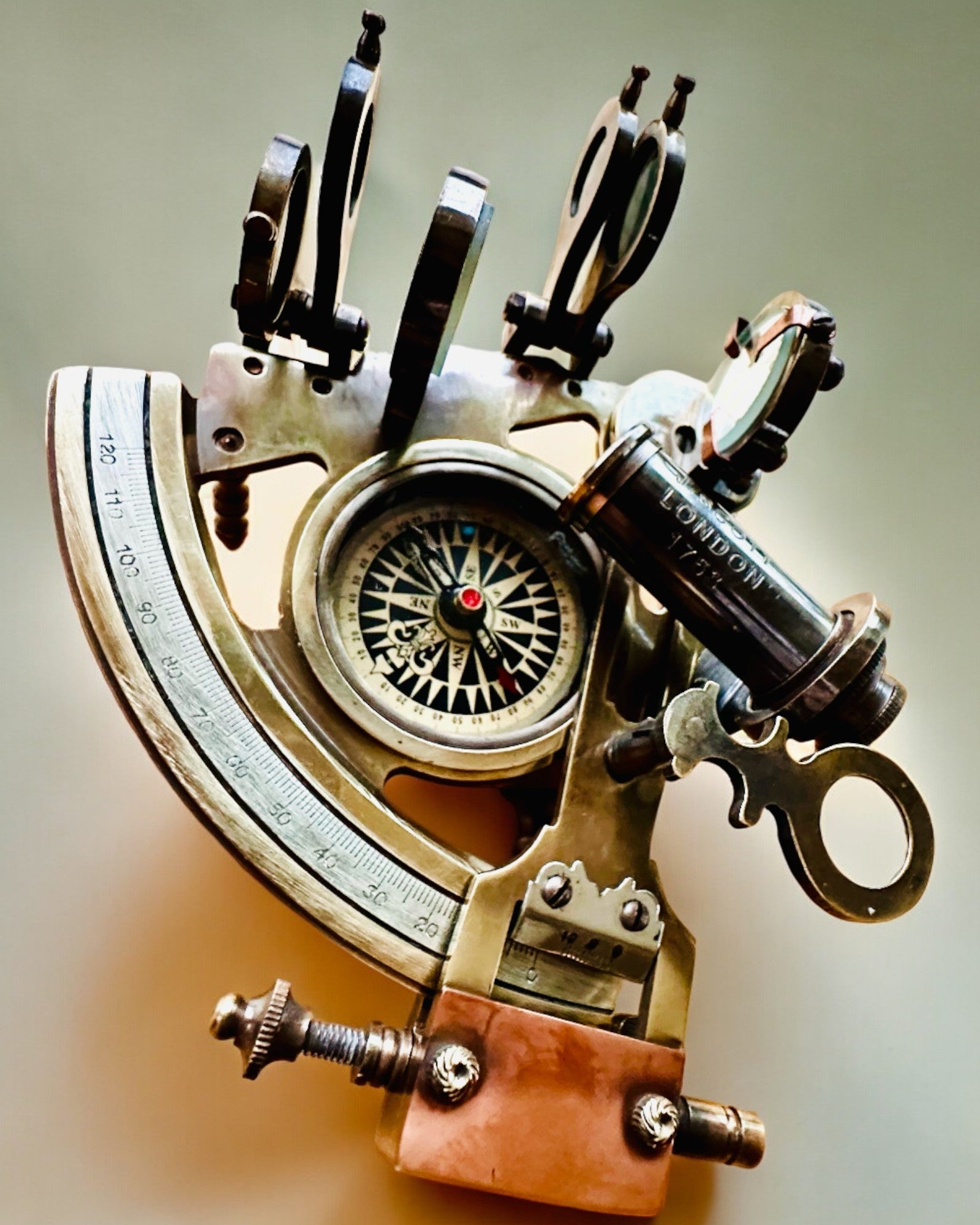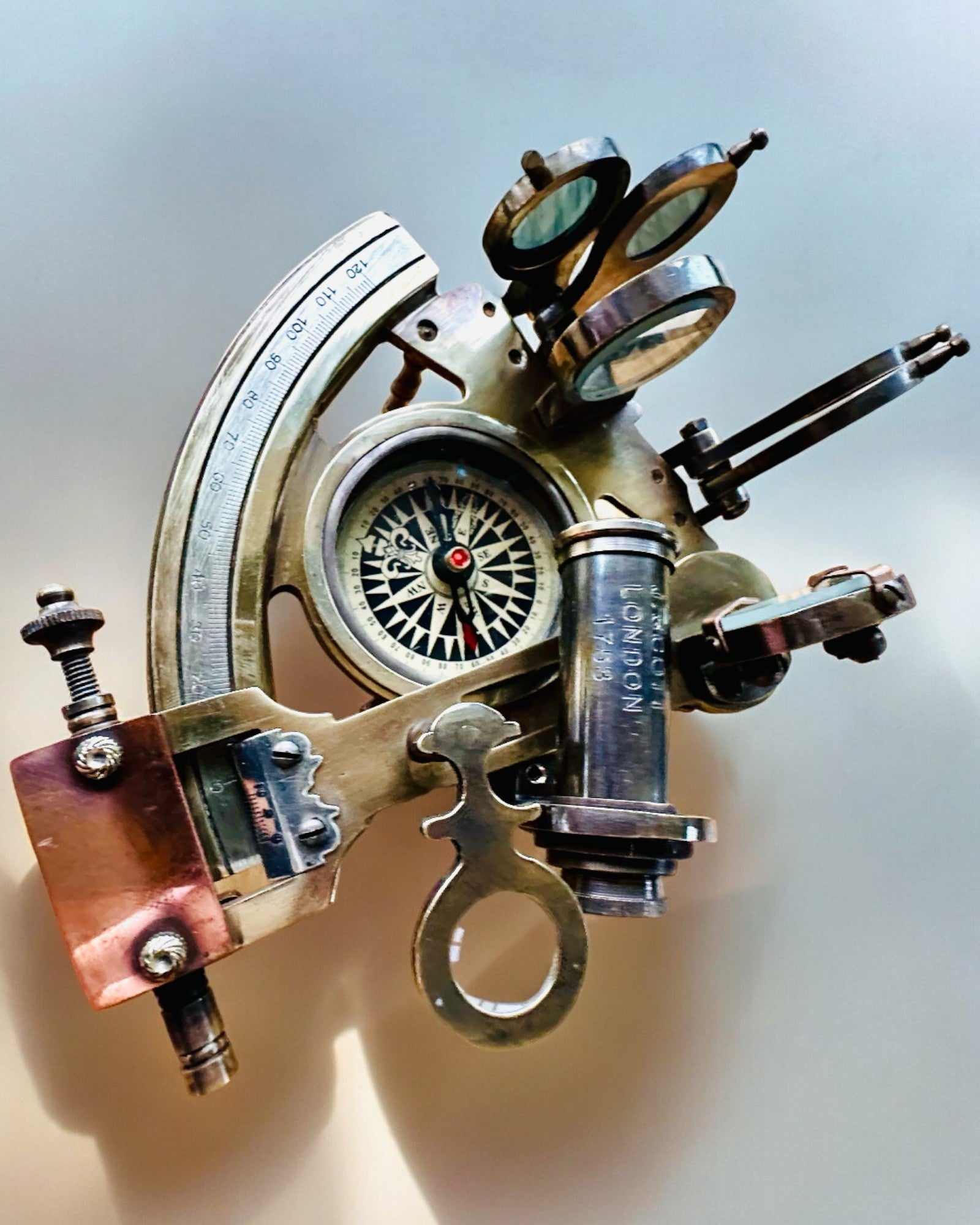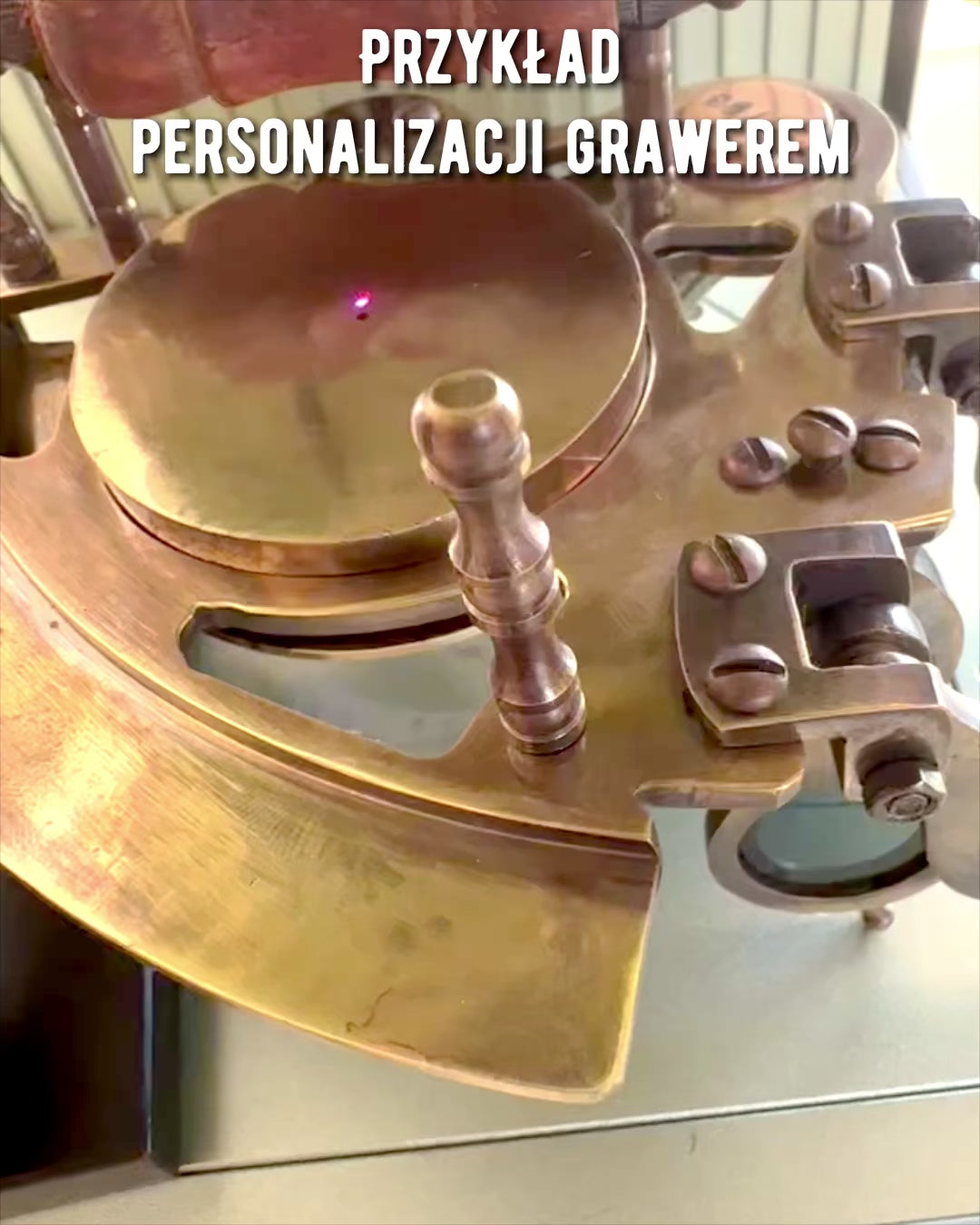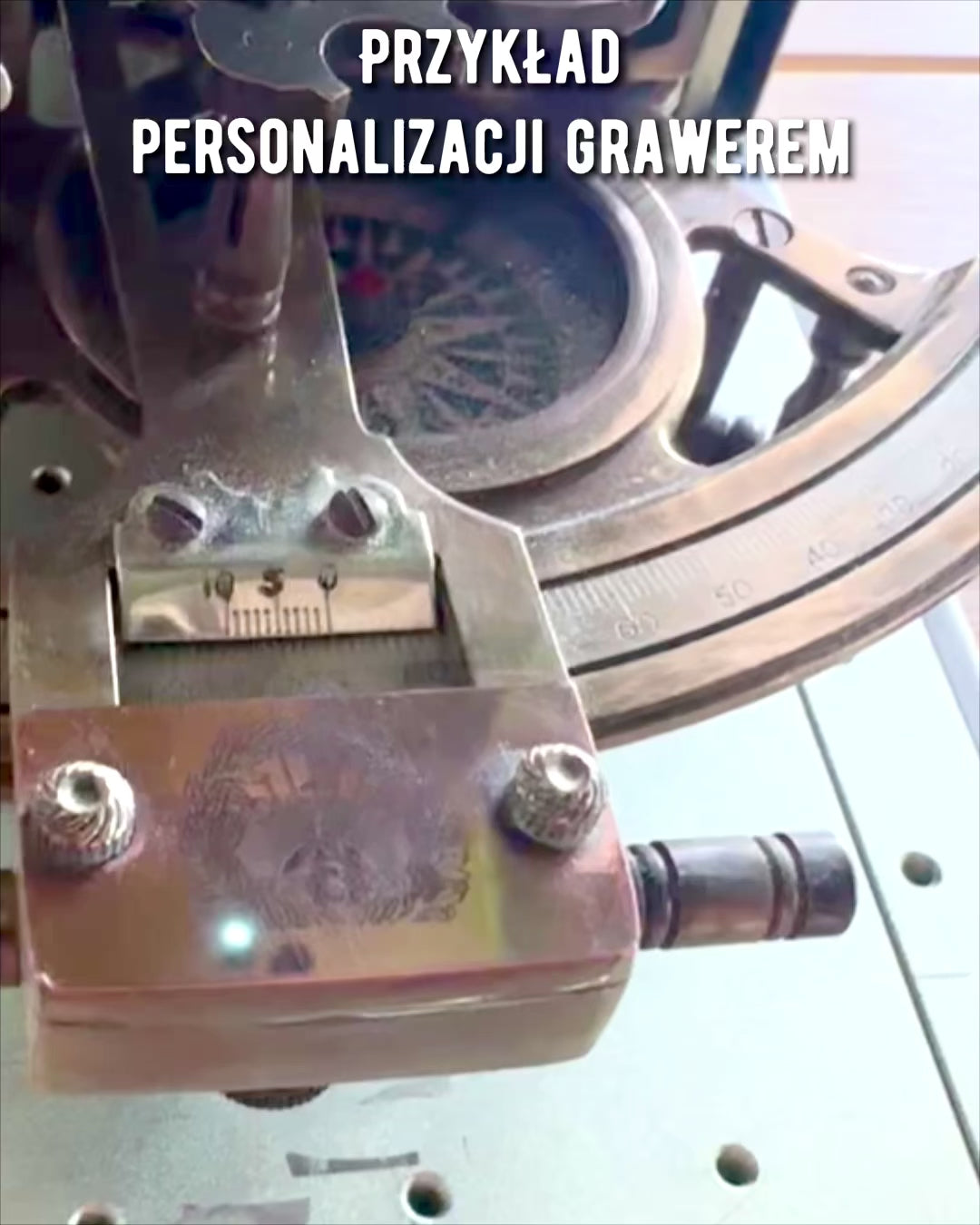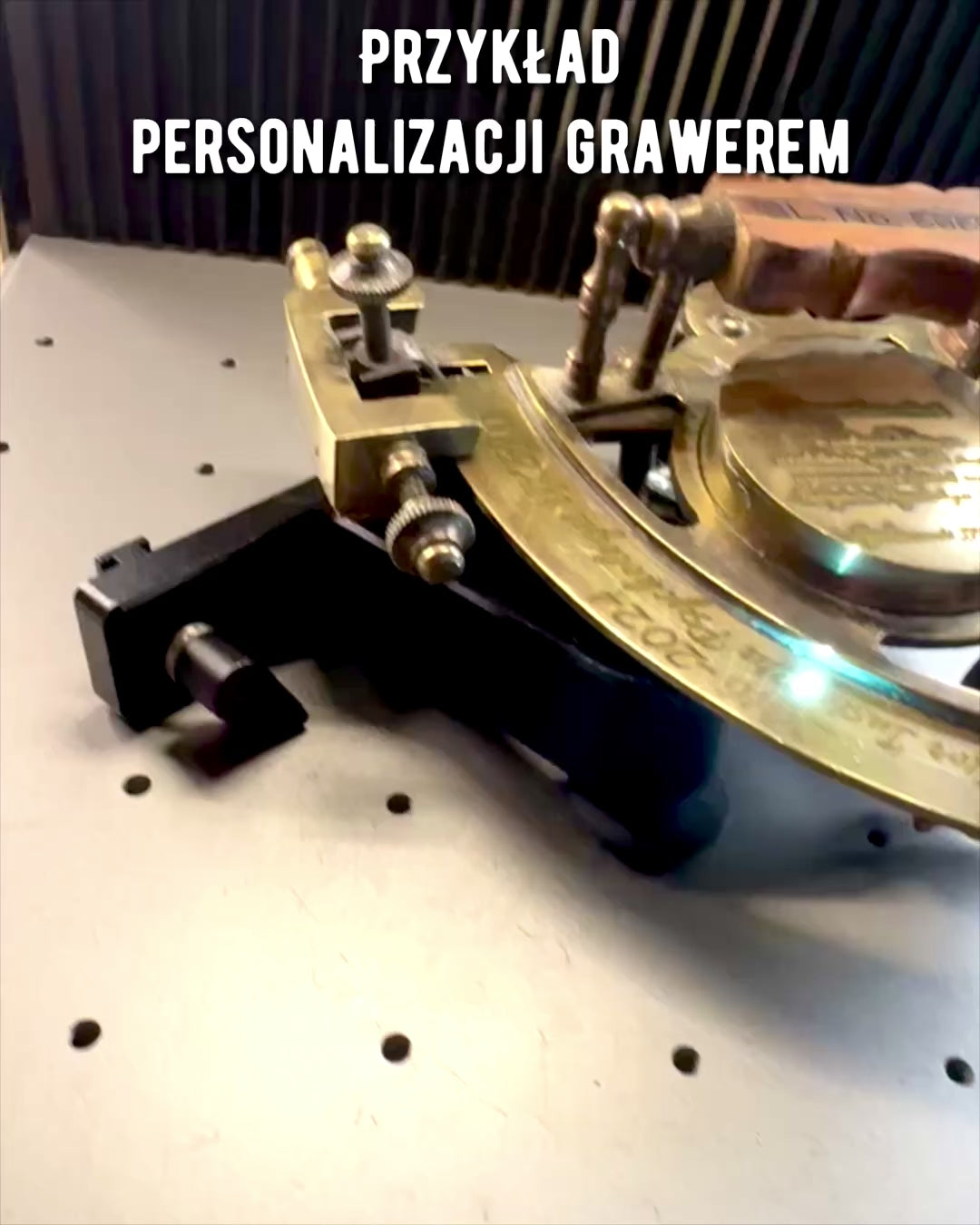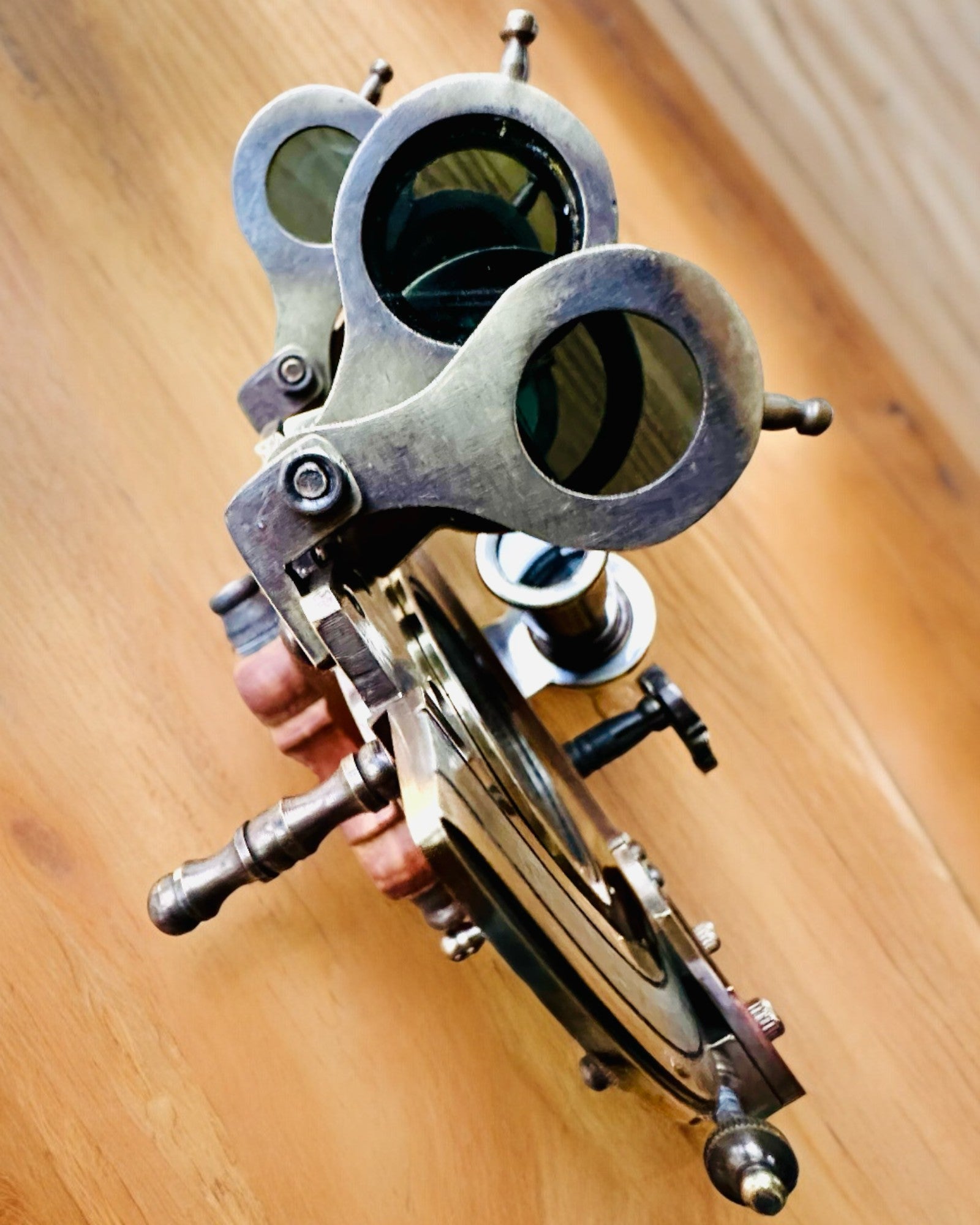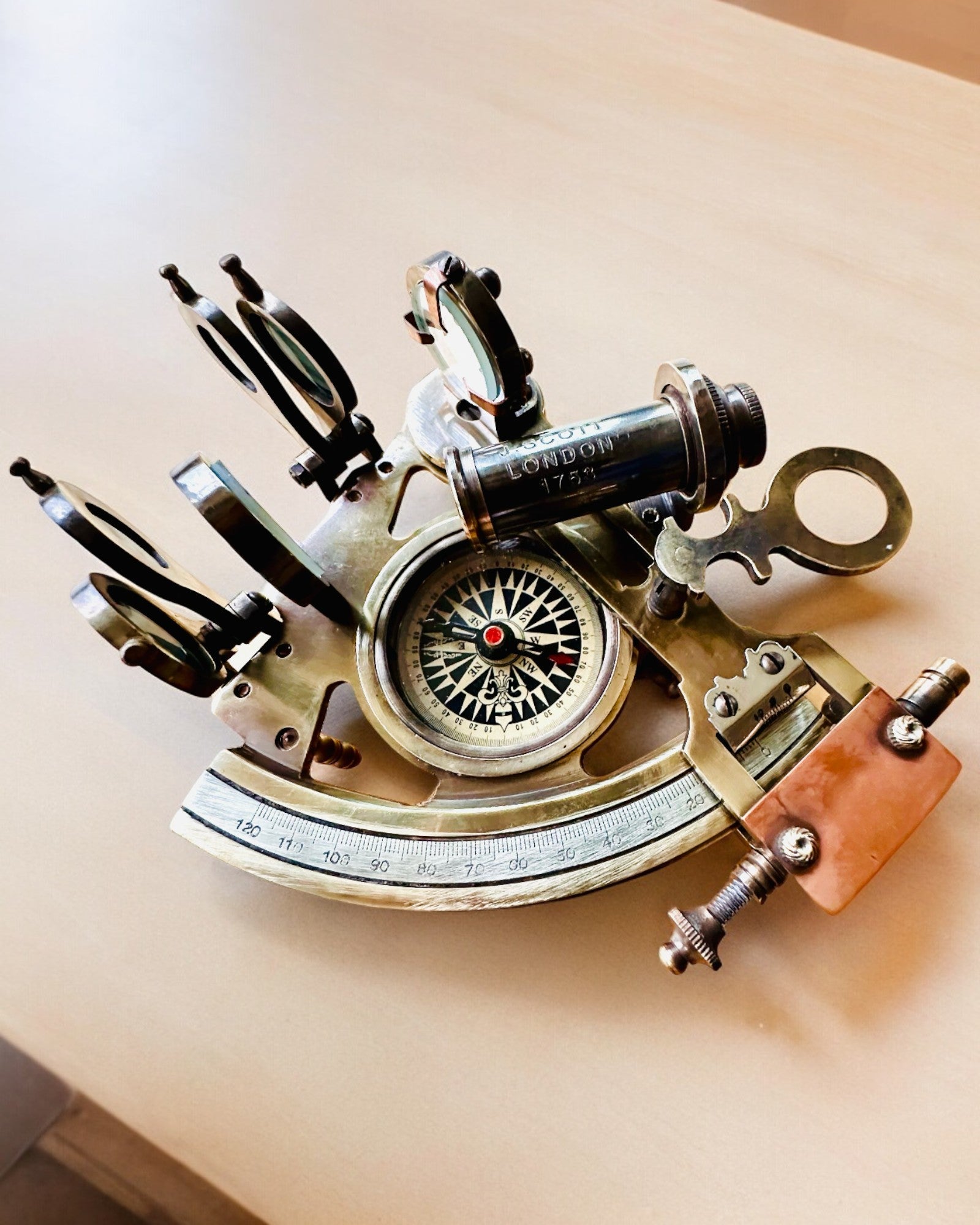Discover our Premium Sextant with Antique Compass – handcrafted by master craftsmen from India. This unique navigational instrument is a perfect blend of tradition and precision, serving as an exceptional decoration and tool for navigation enthusiasts and collectors.
Key product features:
-
Authentic design: Inspired by classic navigation instruments, equipped with a precise compass.
-
Handmade: Each piece is unique and may slightly differ in details.
-
Top-quality material: Solid metal construction with precise finishes.
-
Engraving option: Personalization available, perfect for a gift.
Dimensions: 13 cm x 13 cm
We work directly with artisans from India, ensuring that each piece is unique and crafted with the utmost care. Add a touch of history and elegance to your interior with our Premium Sextant with Compass - Antique.
Possibility to purchase a Retro box (wooden, handmade)
COMPONENT REVIEW
- Rama: The main part of the sextant, usually made of metal, which holds all the other components.
- Index mirror: A small mirror attached to a movable arm that reflects the image of a celestial body.
- Horizontal mirror: Placed on a frame, this mirror partially reflects and partially allows for direct observation of the horizon.
- Telescope: Mounted on a frame, the telescope is used for aiming at a celestial body.
- Index arm: A movable arm with a vernier scale or micrometer drum, used for measuring angles.
- Filters: Glass filters that reduce the intensity of sunlight, used to protect the eyes during solar observation.
- Micrometer drum: A precise mechanism for accurate adjustments of the index arm.
- Vernier scale: Allows for reading the angle with high accuracy.
- Clamp: Locks the index arm in place after it has been adjusted.
STEP BY STEP USER MANUAL
- Preparation:
- Attach the sextant to a stable surface or hold it firmly.
- Ensure that the telescope is properly aligned with the horizontal mirror and the index mirror.
- Set filters when observing the sun to protect your eyes from damage.
- Alignment of the Sextant:
- Look through the telescope and move the index arm until you see the celestial body reflected in the index mirror.
- Continue adjusting until the reflected image of the celestial body is aligned with the horizon visible through the horizontal mirror.
- Precise Adjustment:
- Use the micrometer drum for precise adjustment. Rotate it until the celestial body is perfectly aligned with the horizon.
- If you are using a vernier scale, read the angle on the main scale, and then make an additional precise measurement on the vernier.
- Reading of the Angle:
- The angle measured between the horizon and the celestial body will be visible on the scale. This is the angle that will be needed for navigational purposes.
- Record the observation time, as it will be crucial for calculating your position.
- Calculating Position:
- Having measured the angle and recorded the time, use the nautical almanac to find the position of the celestial body at the given time.
- Use this data to mark your position on the navigation map.
- Maintenance:
- After use, clean the telescope's mirrors and lenses with a soft cloth.
- Store the sextant in a protective case to prevent damage.
Important Notes:
- Always calibrate the sextant before use by checking it against a known angle or the horizon.
- Regularly check that all components are properly attached and ensure that everything is securely fastened before taking measurements.
- Practice using the sextant in various conditions to become proficient in its use.



